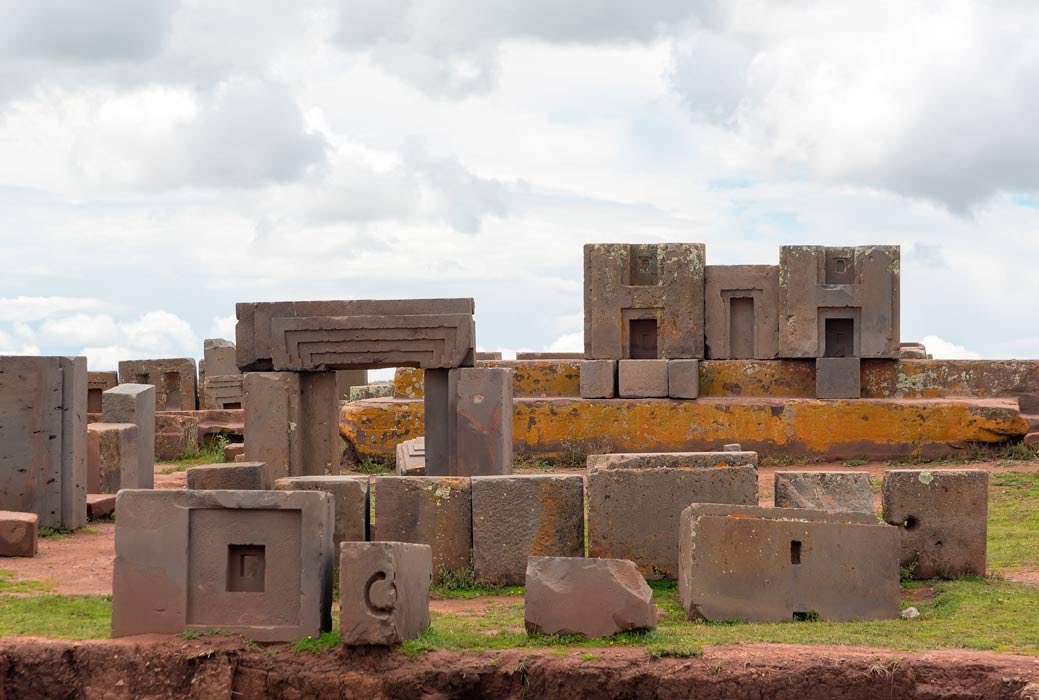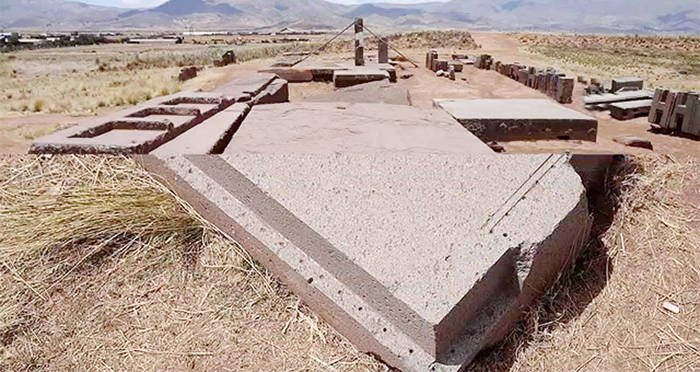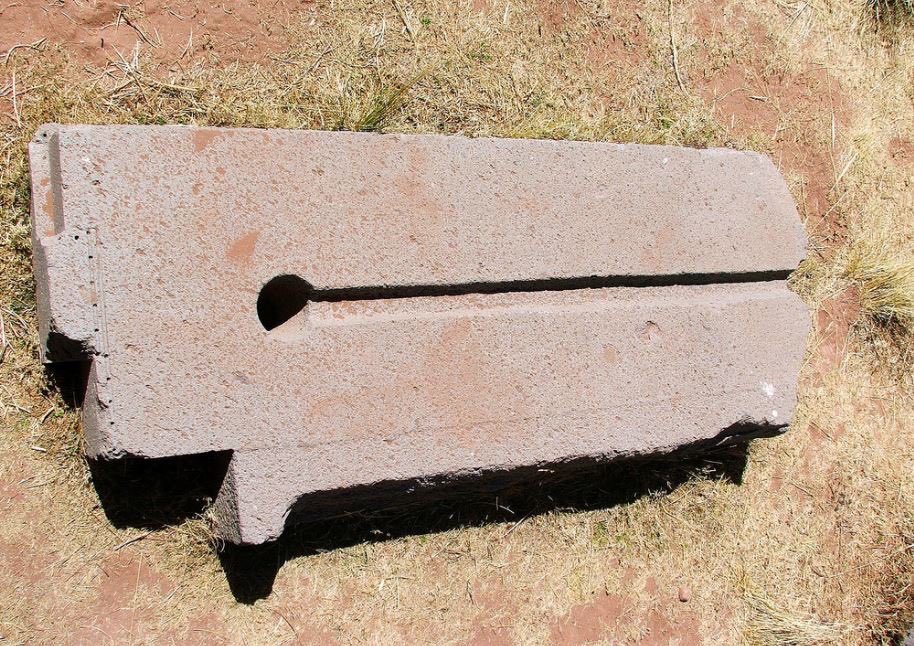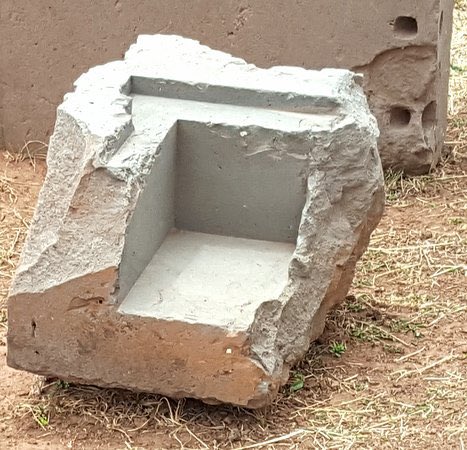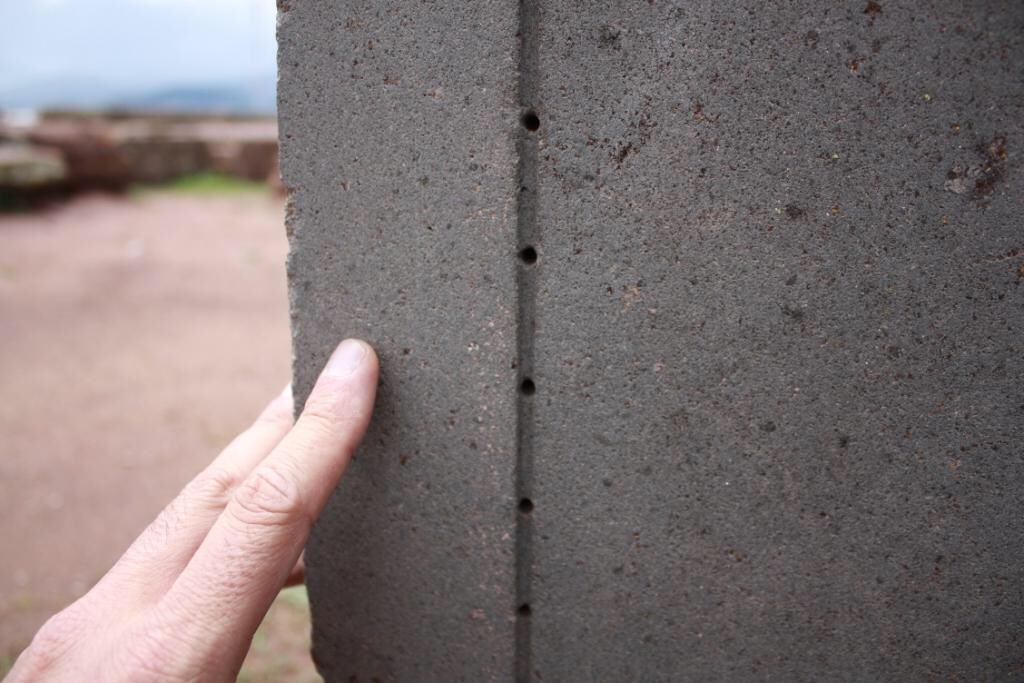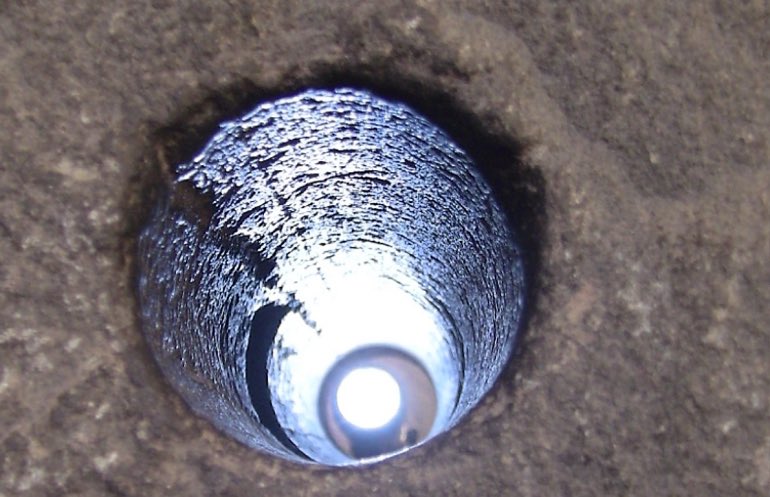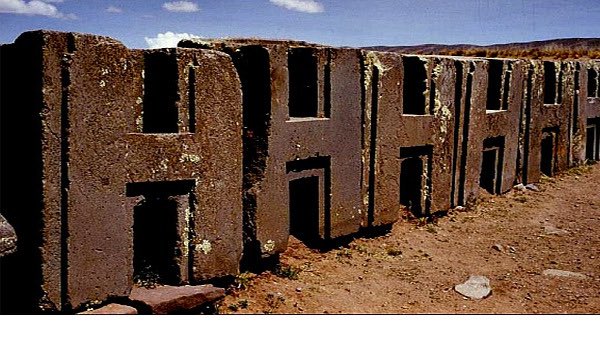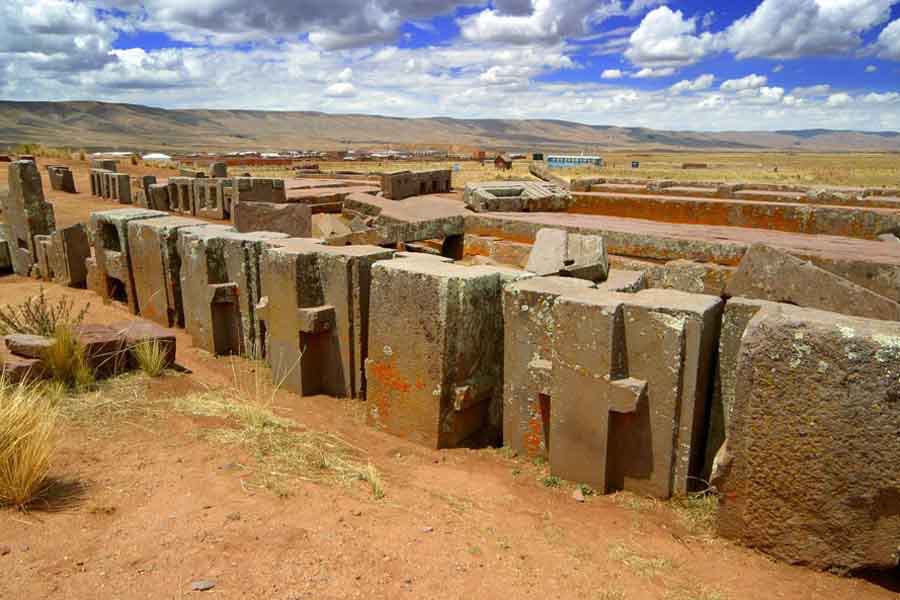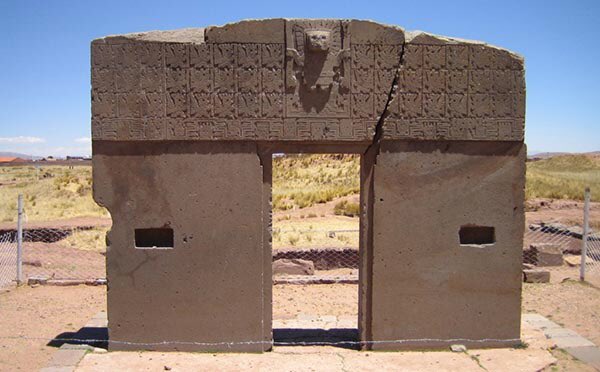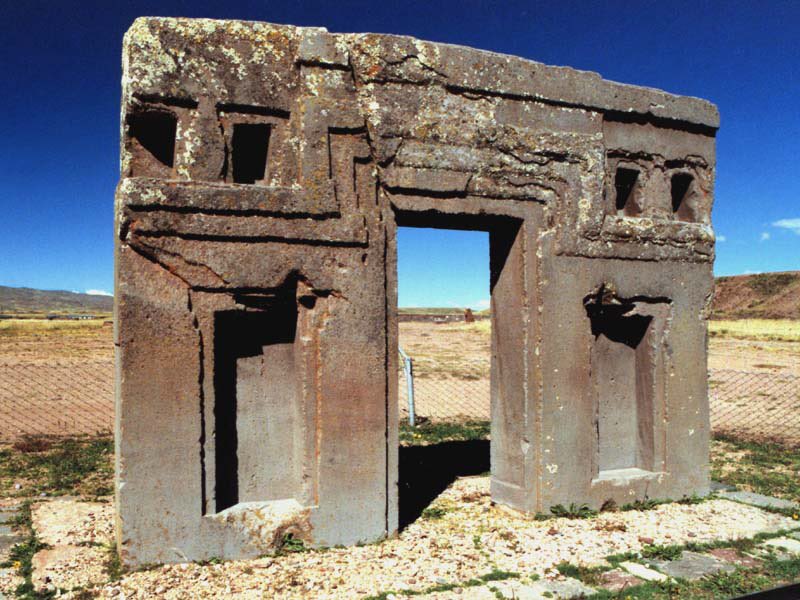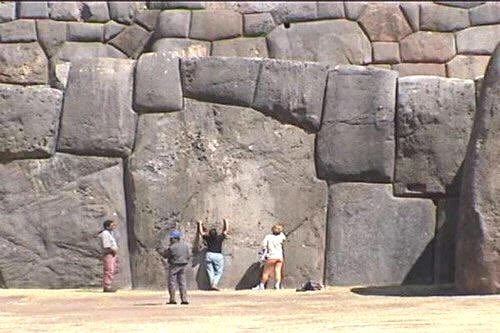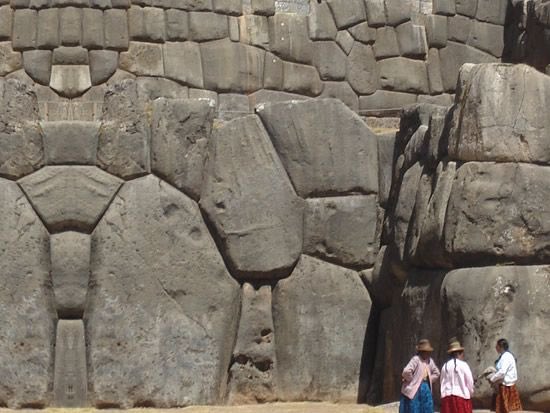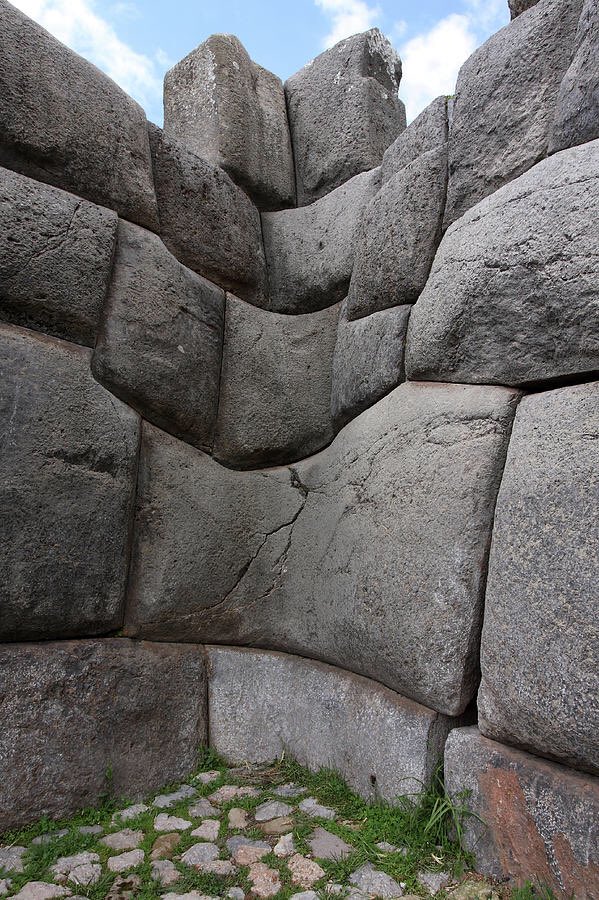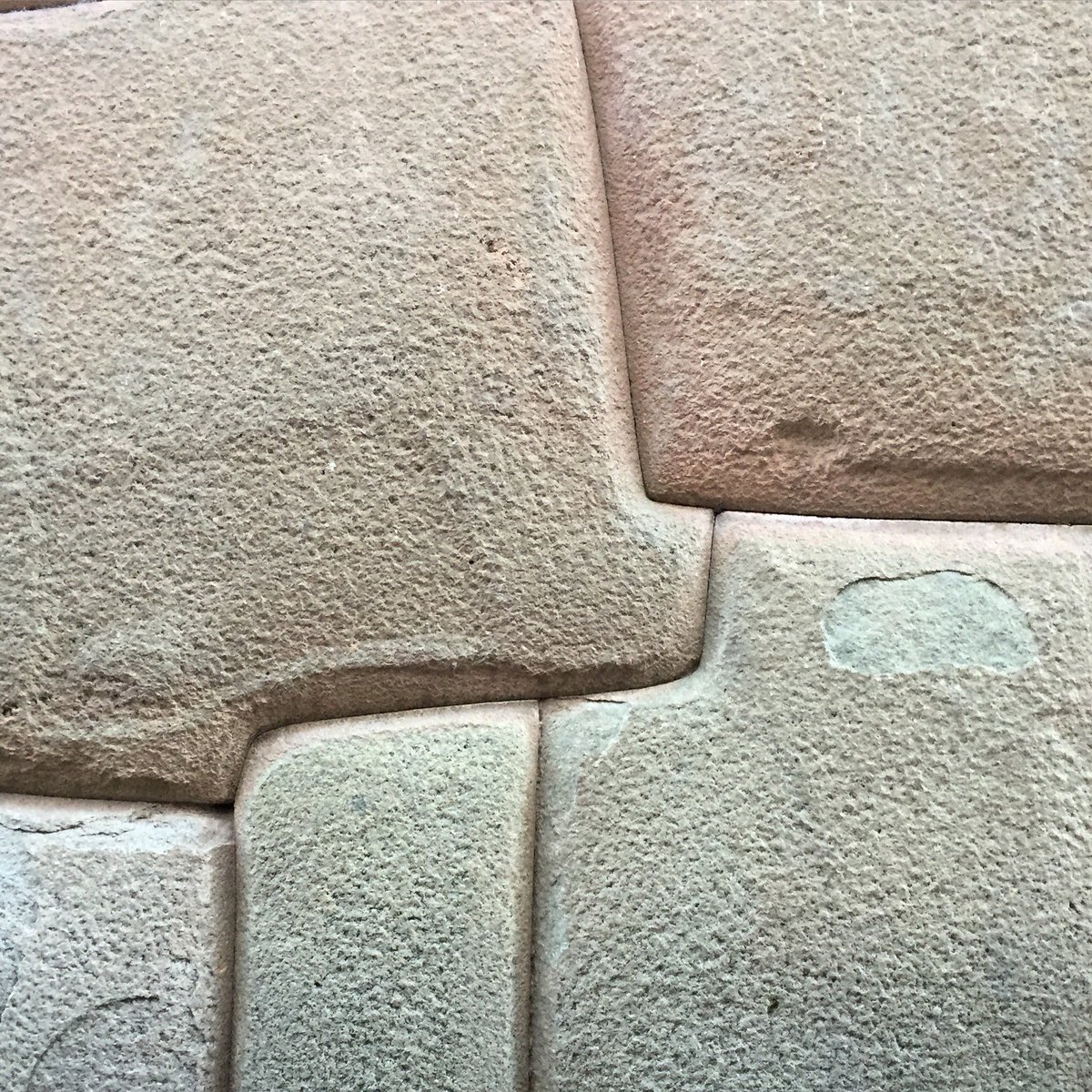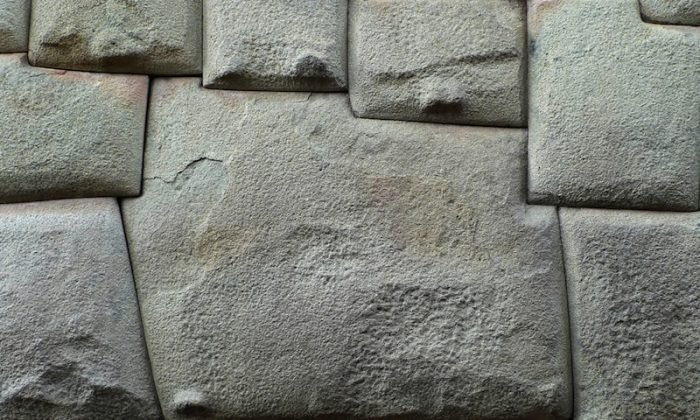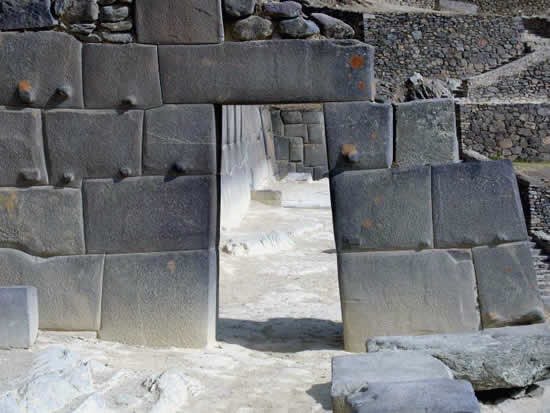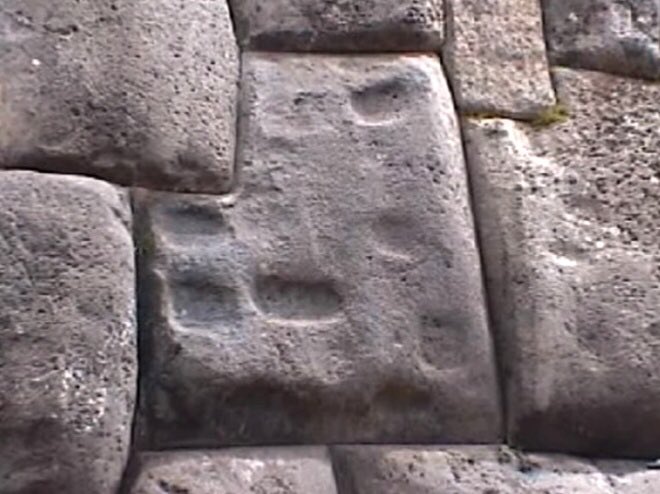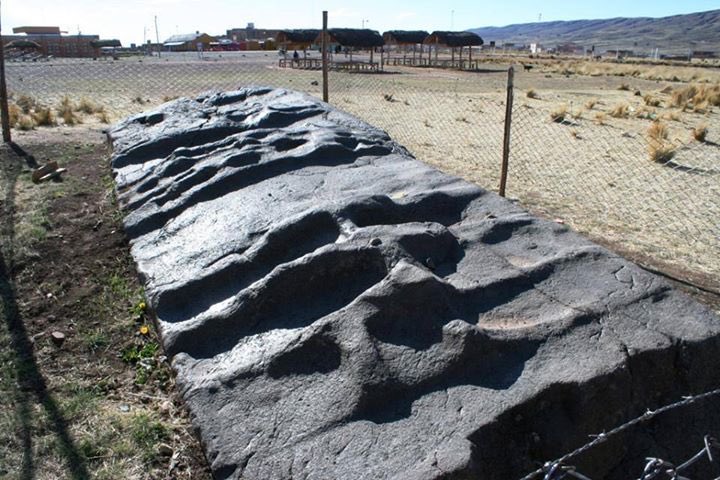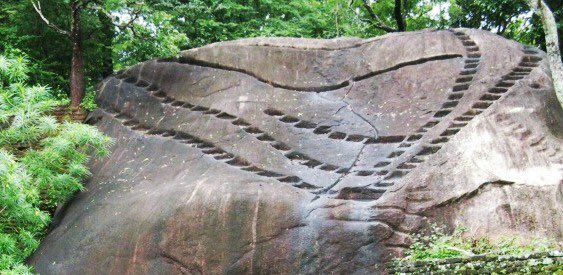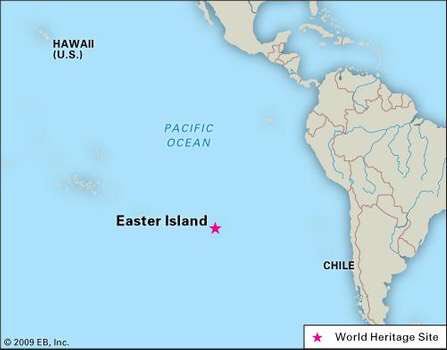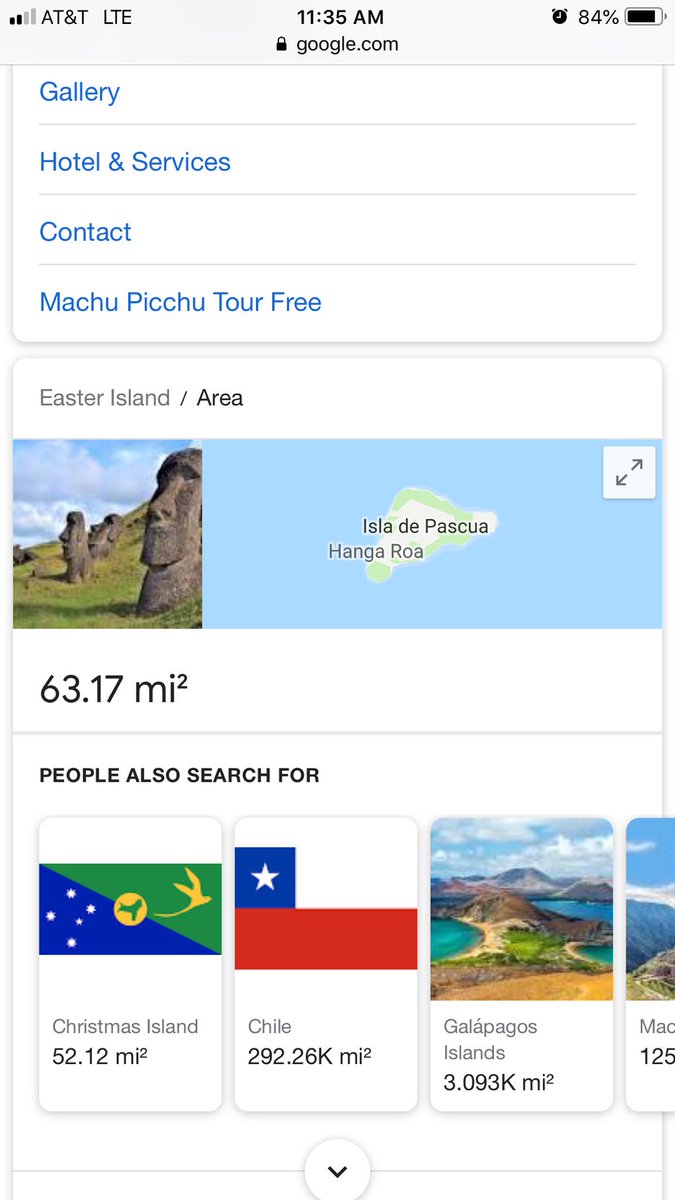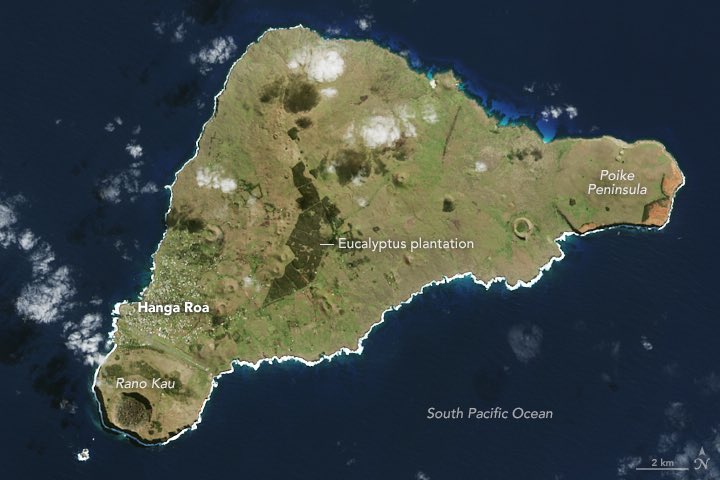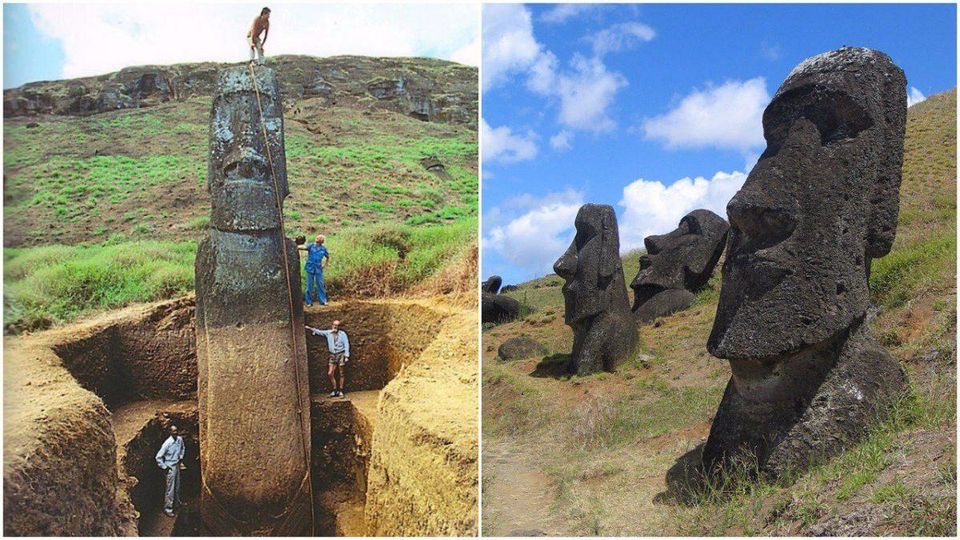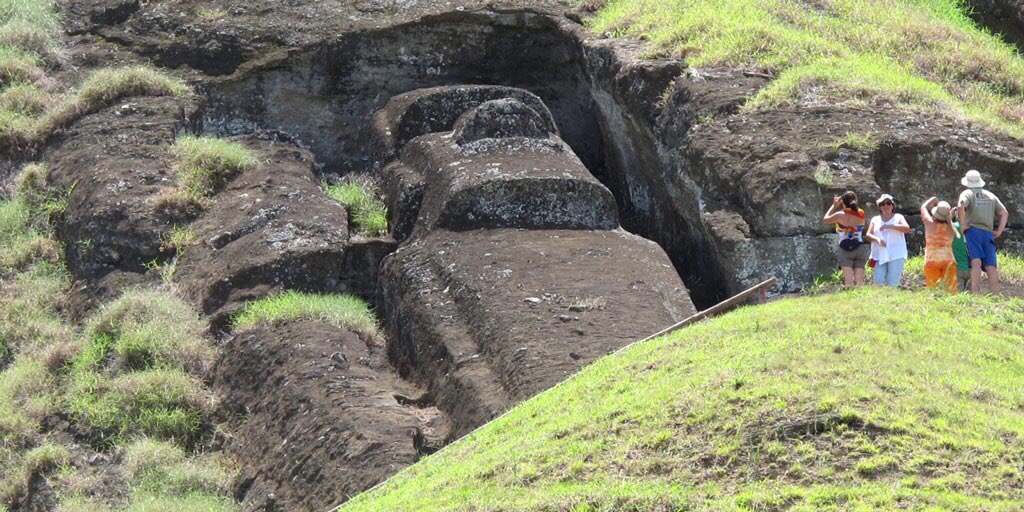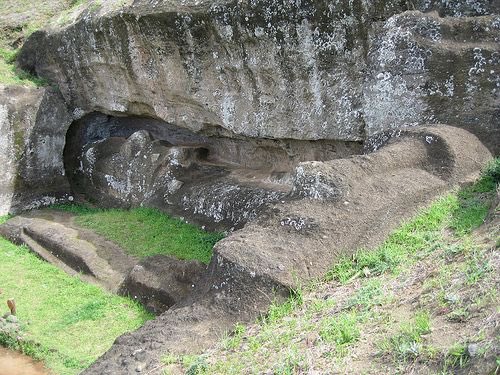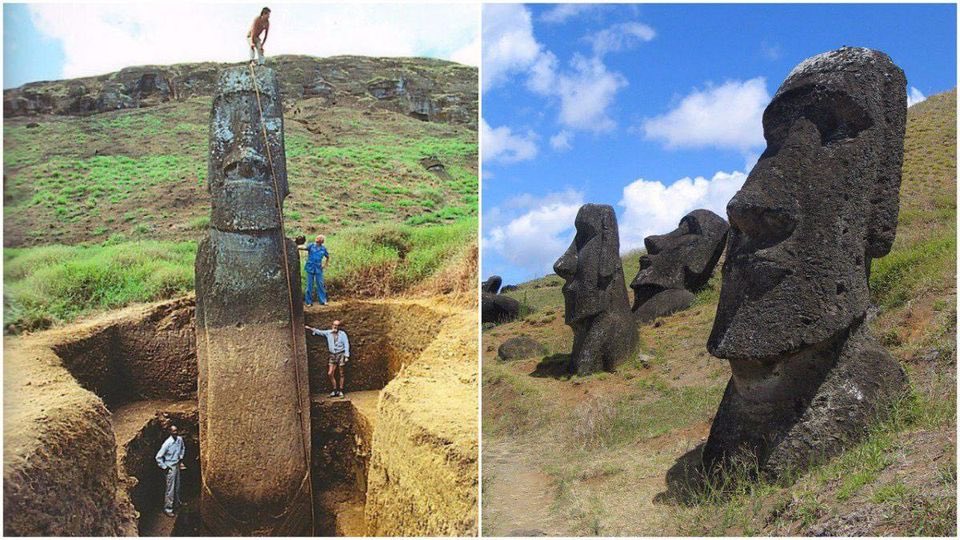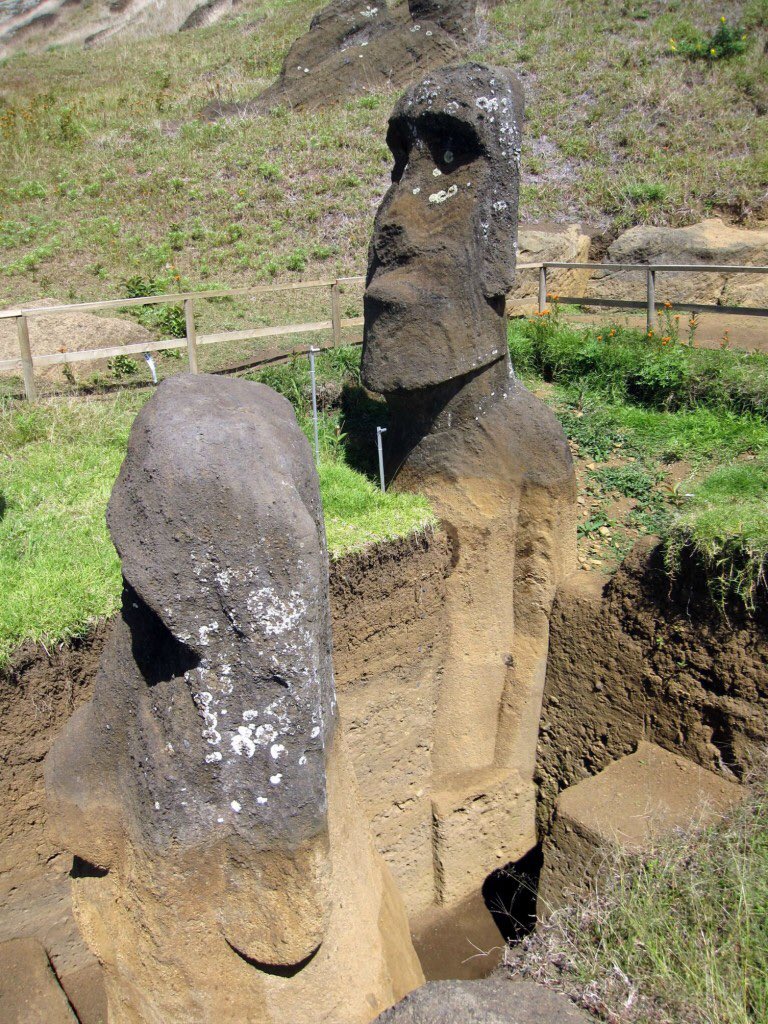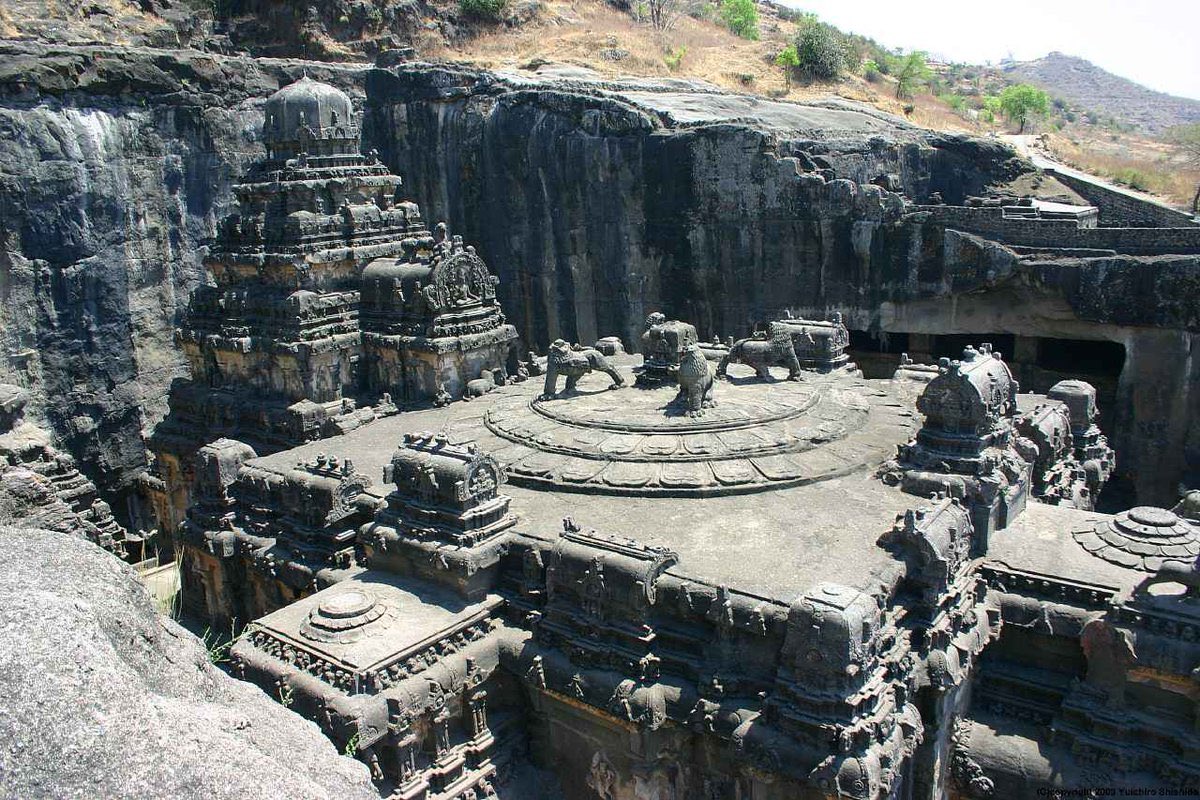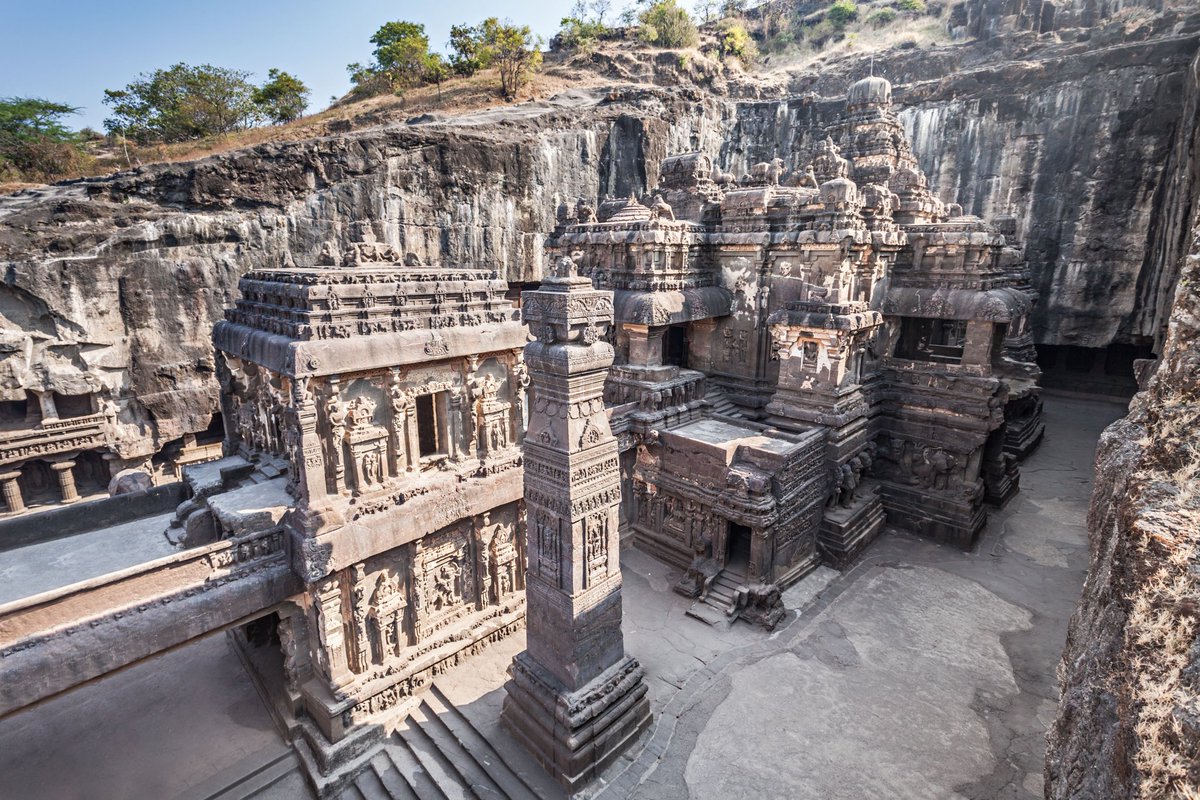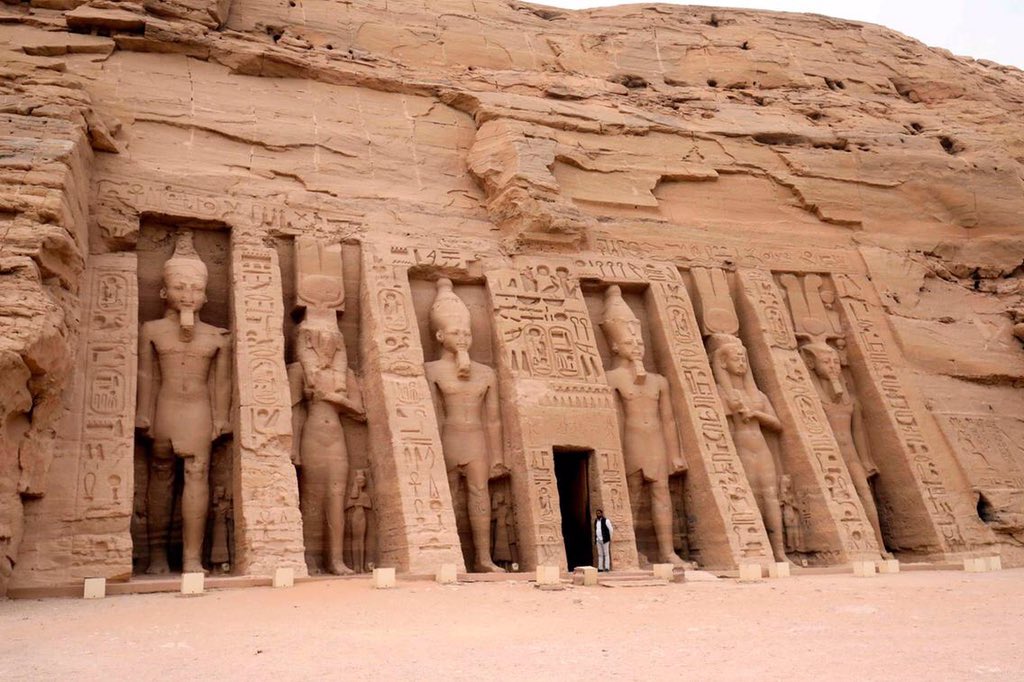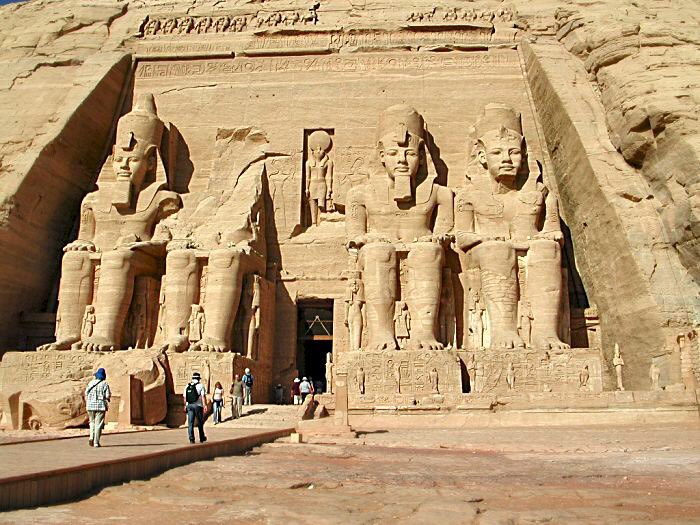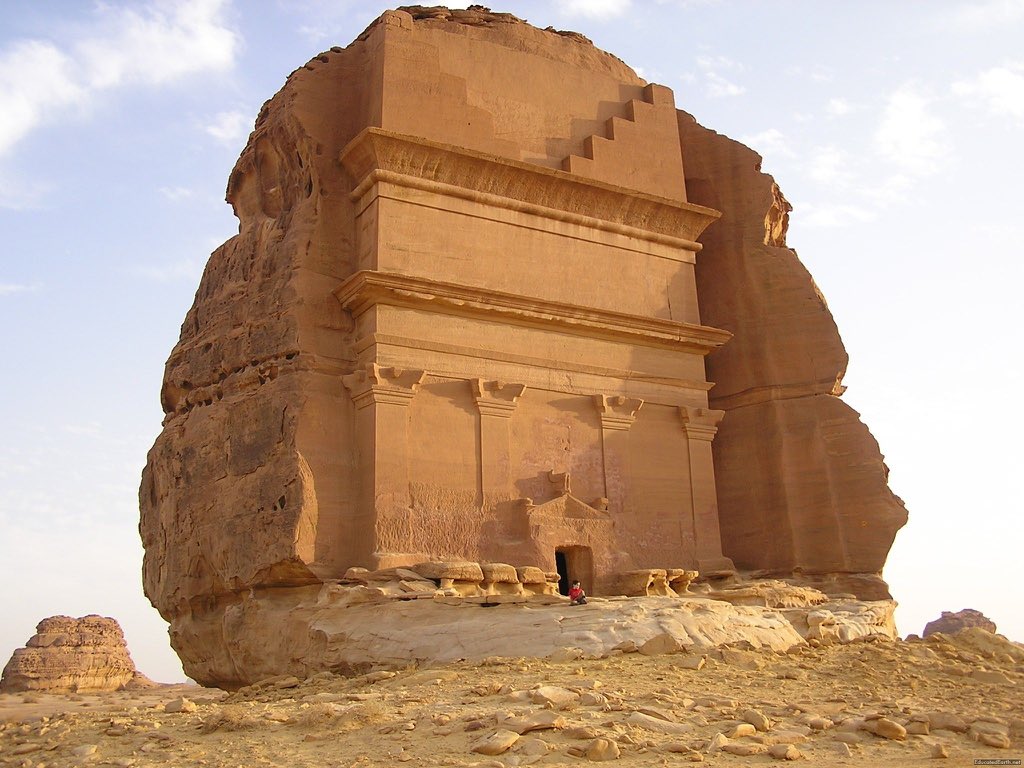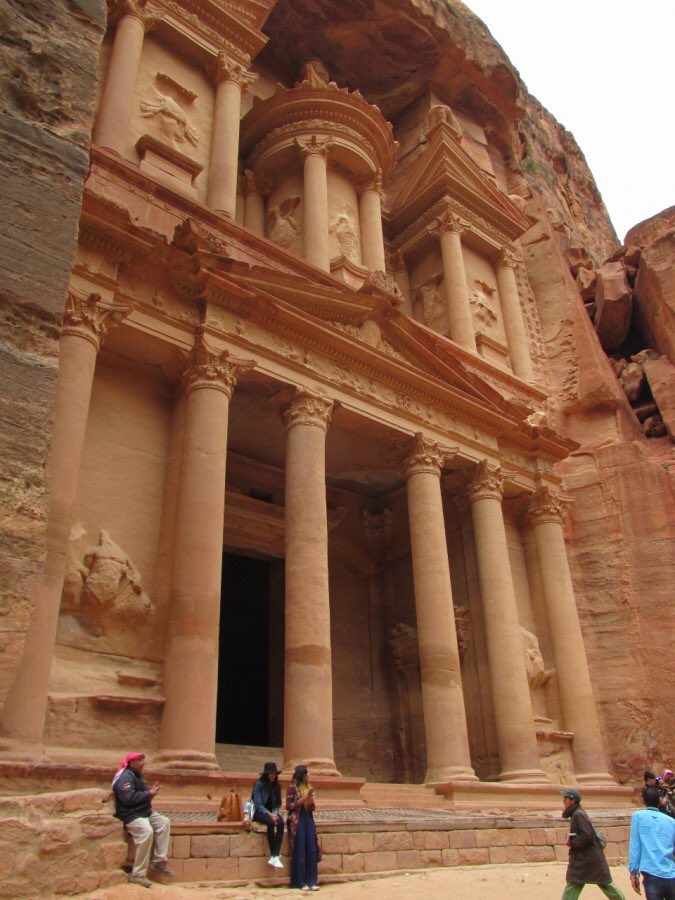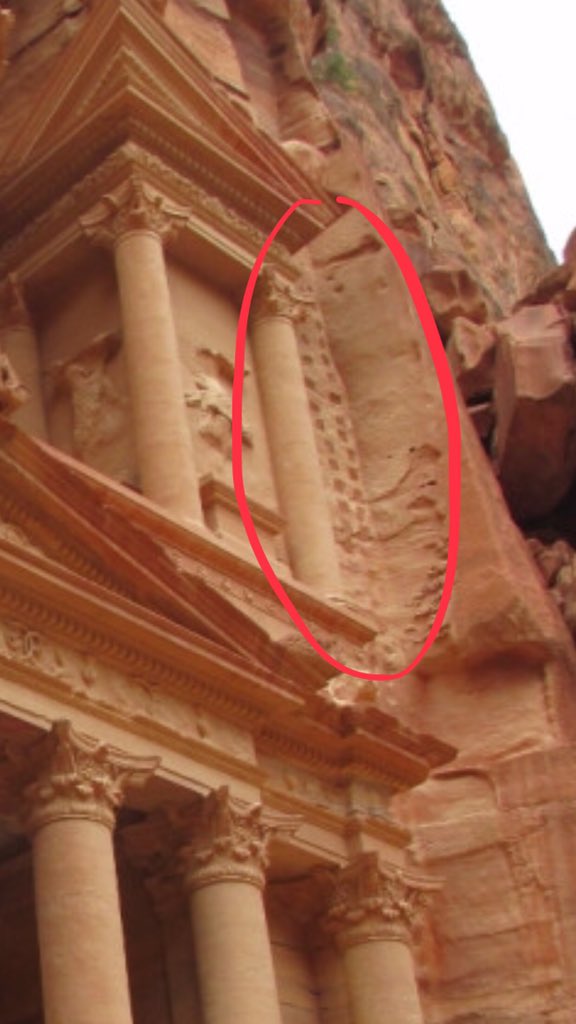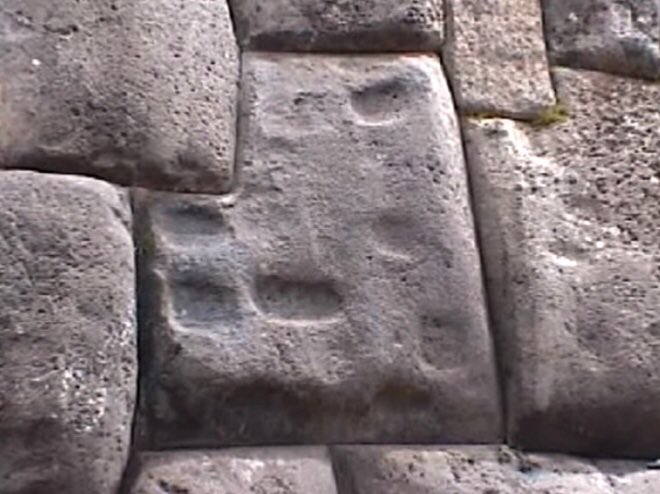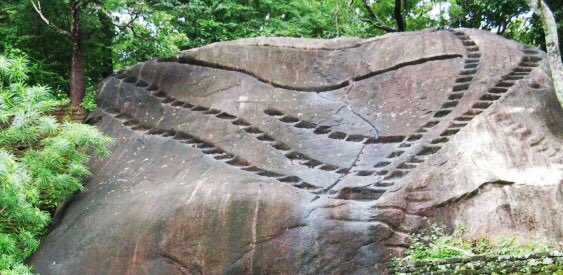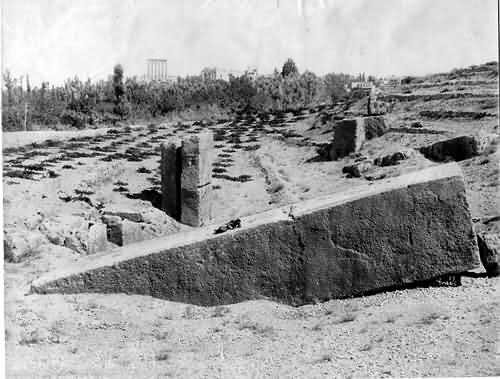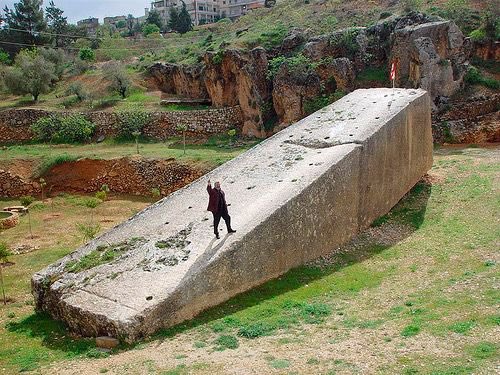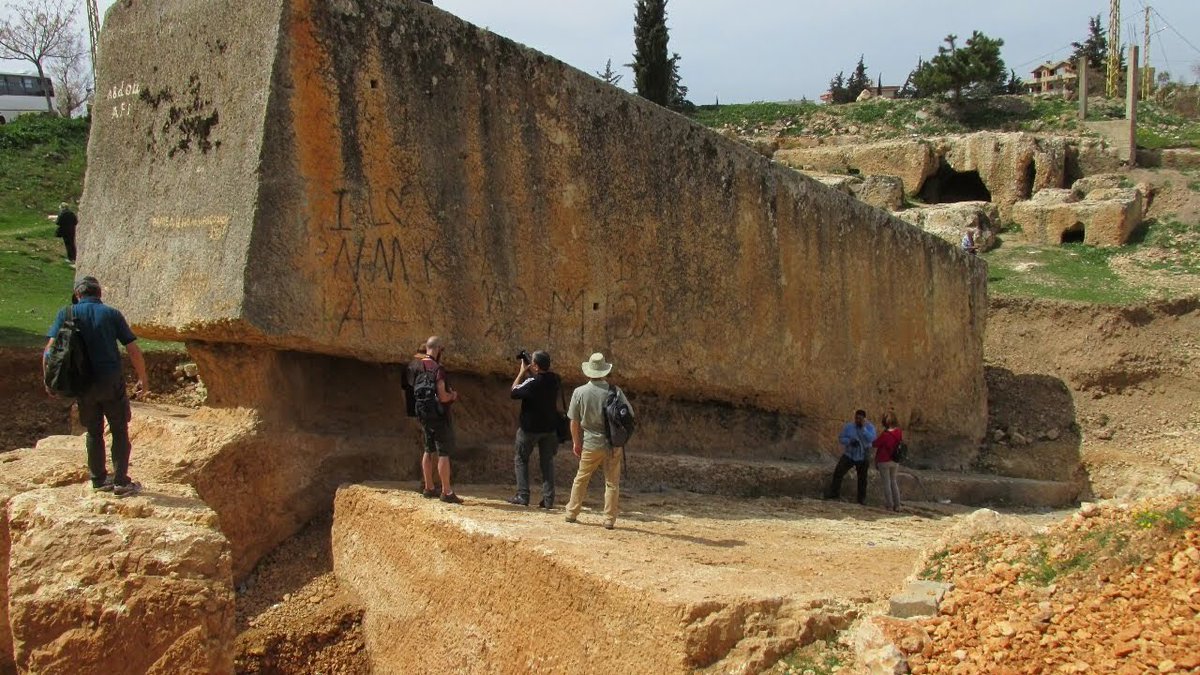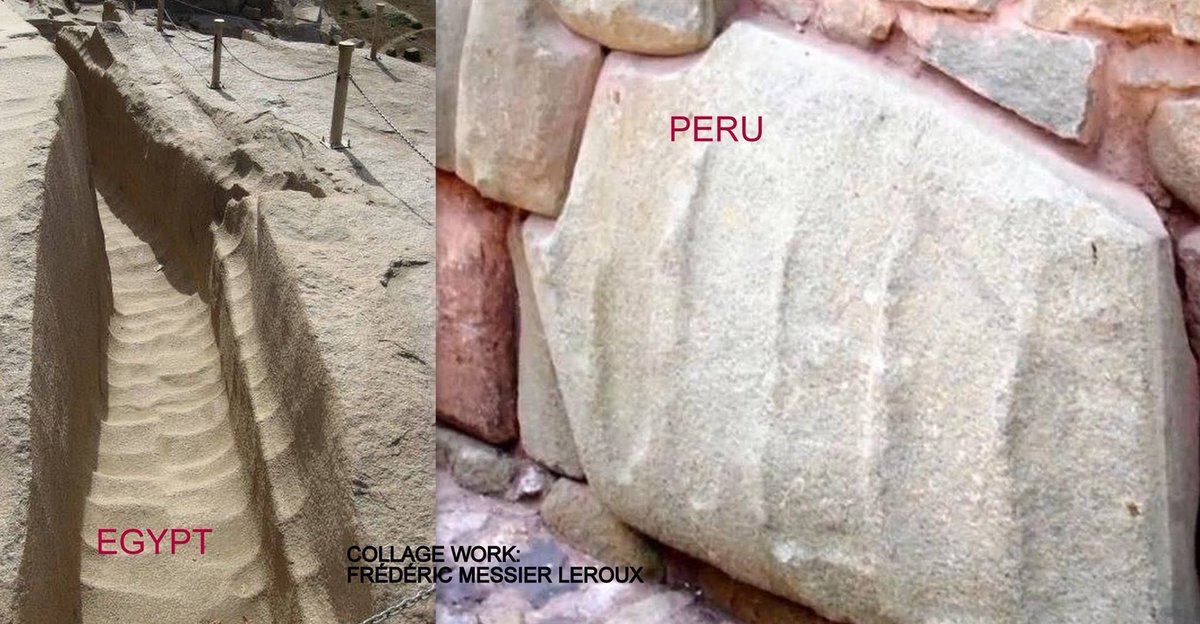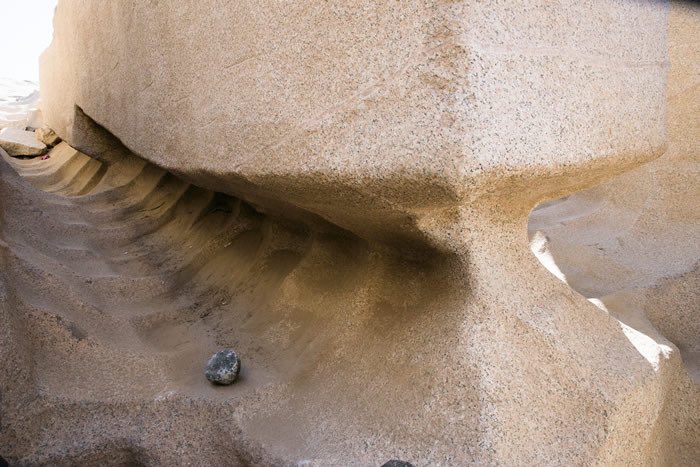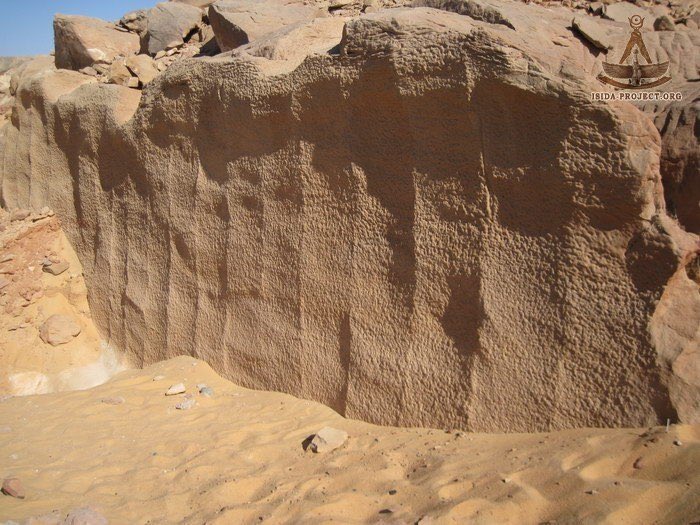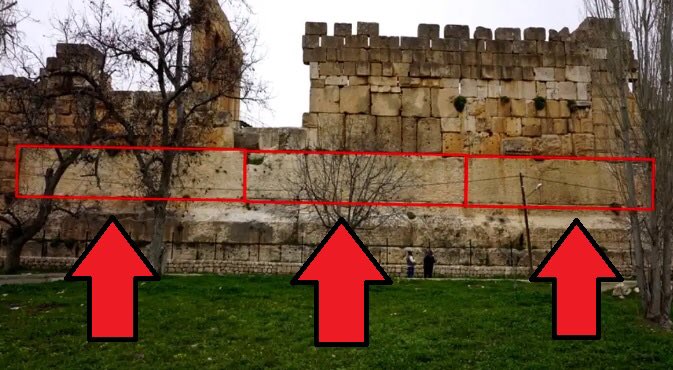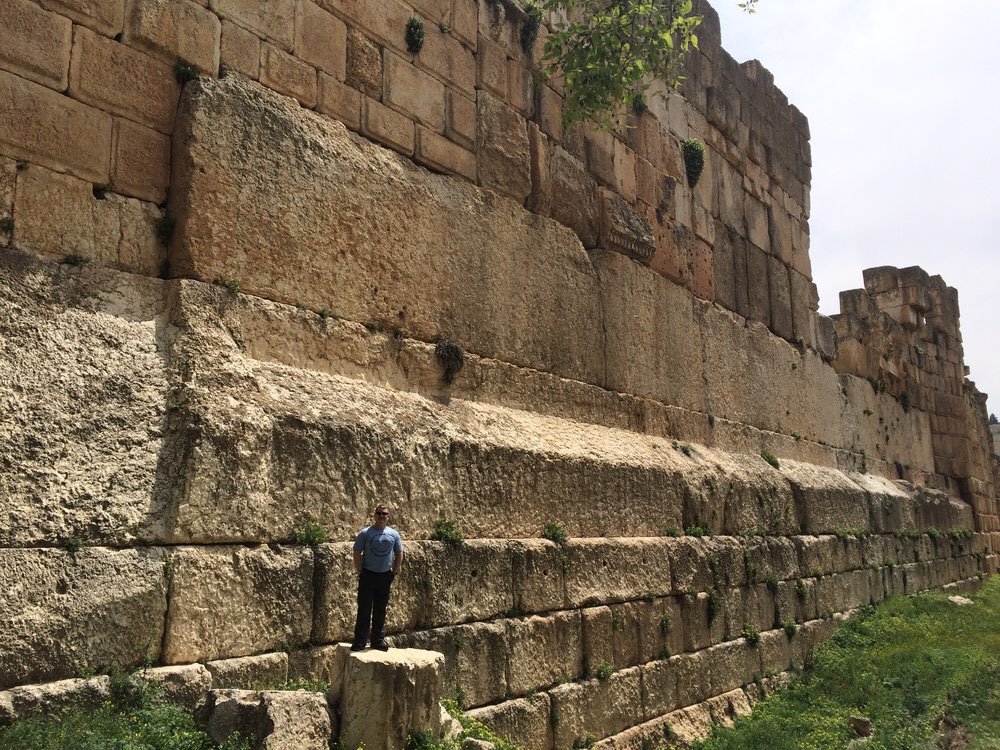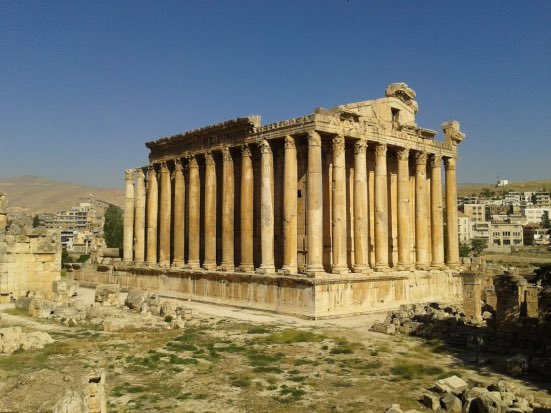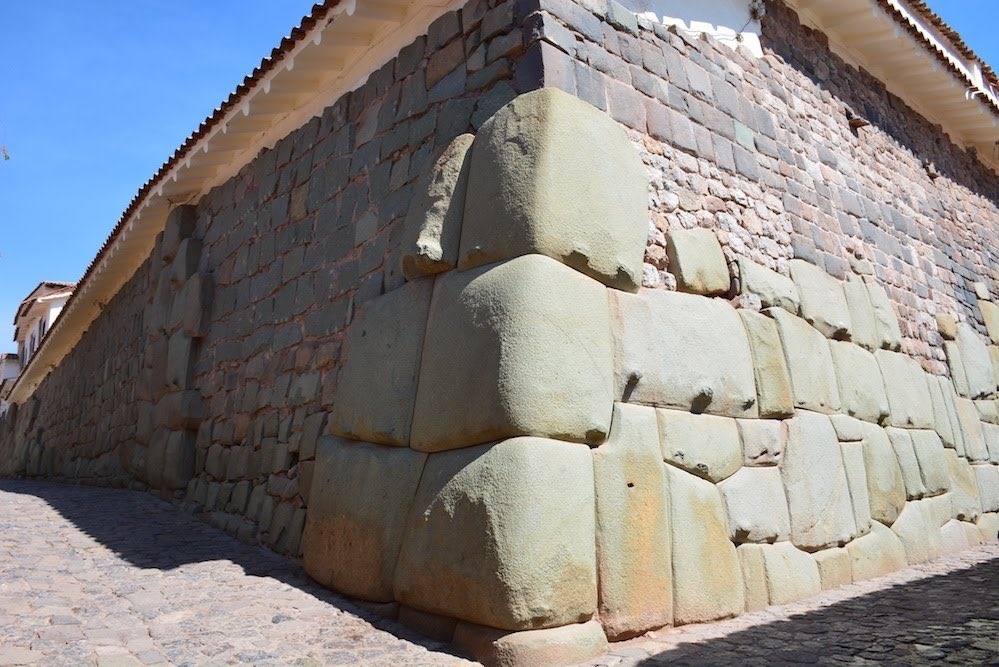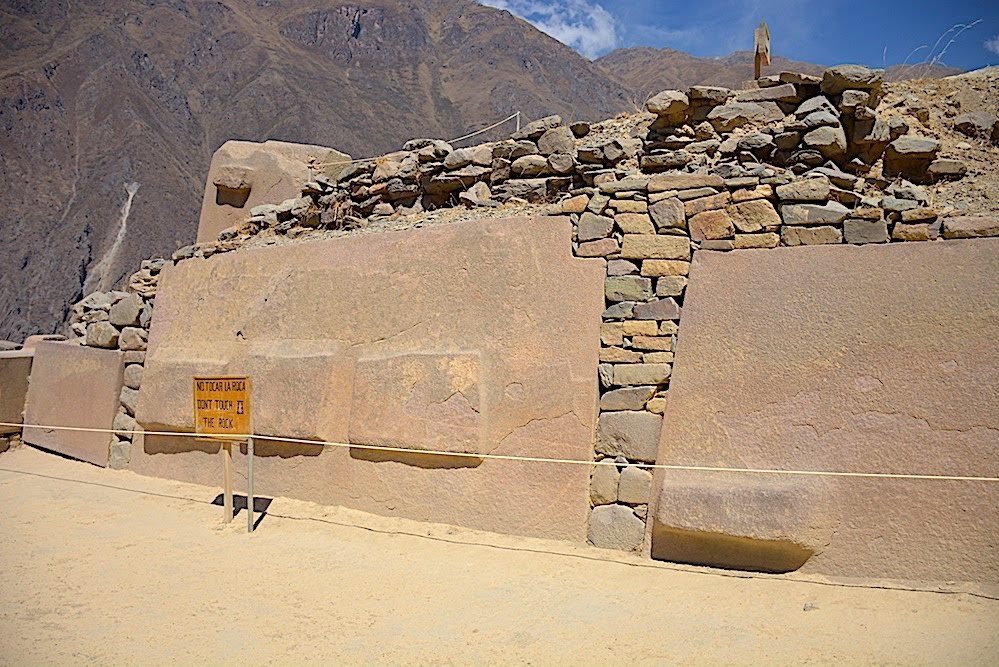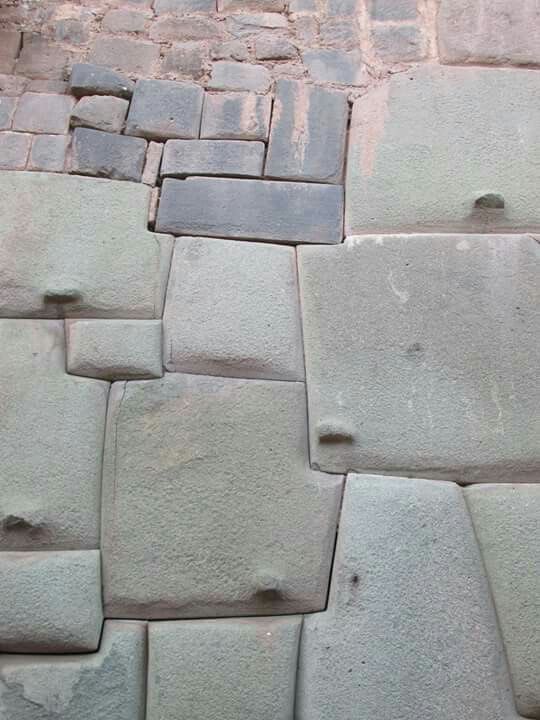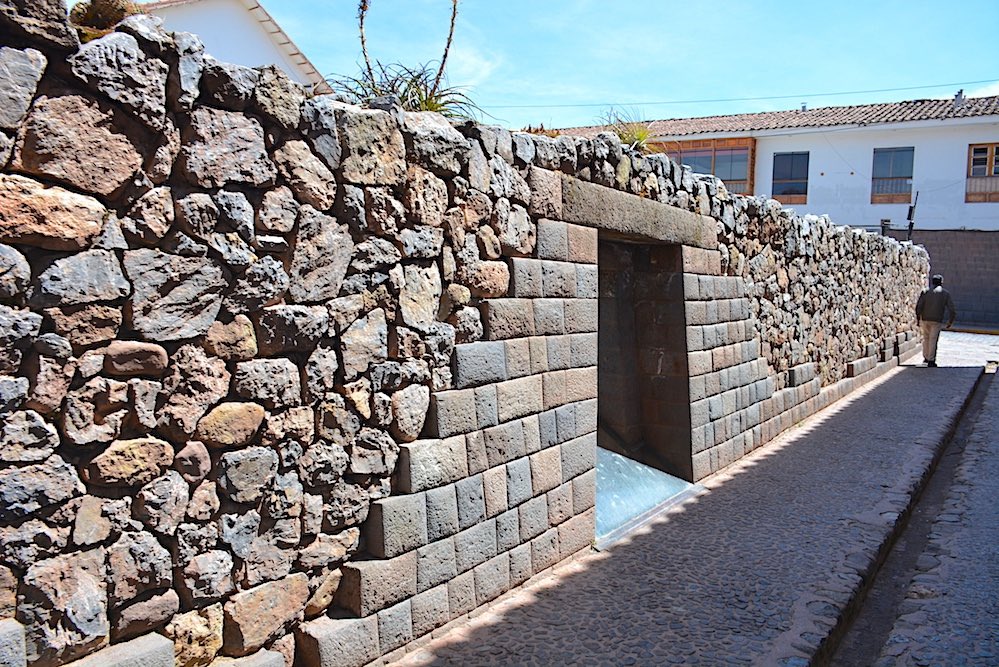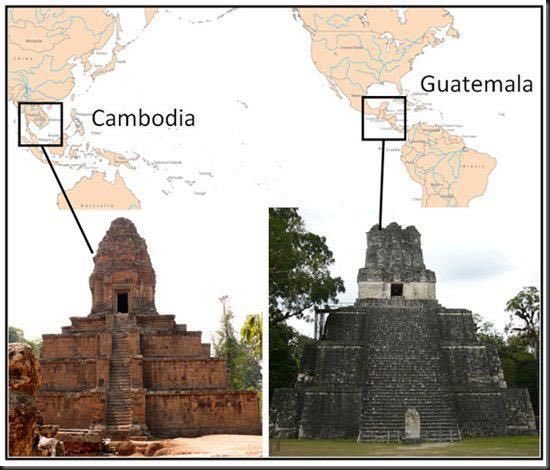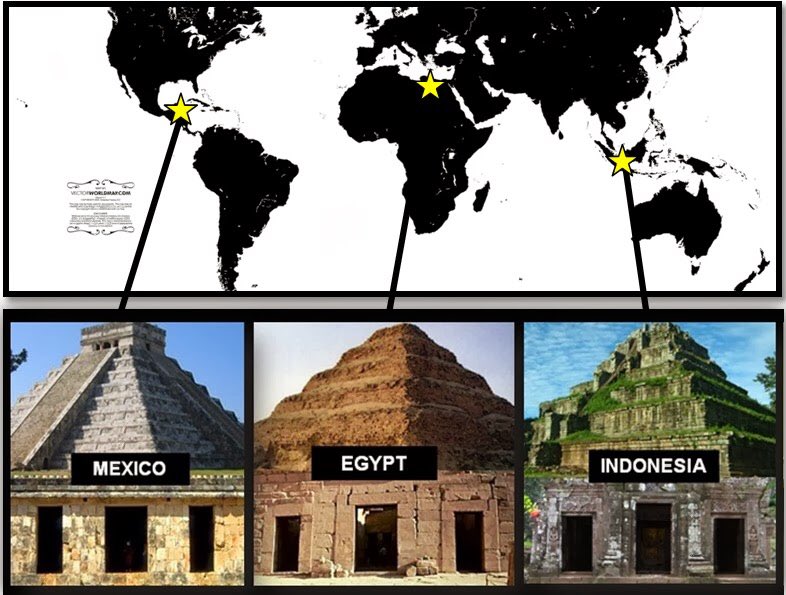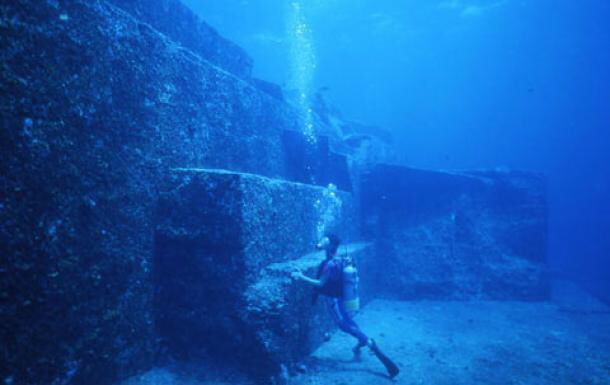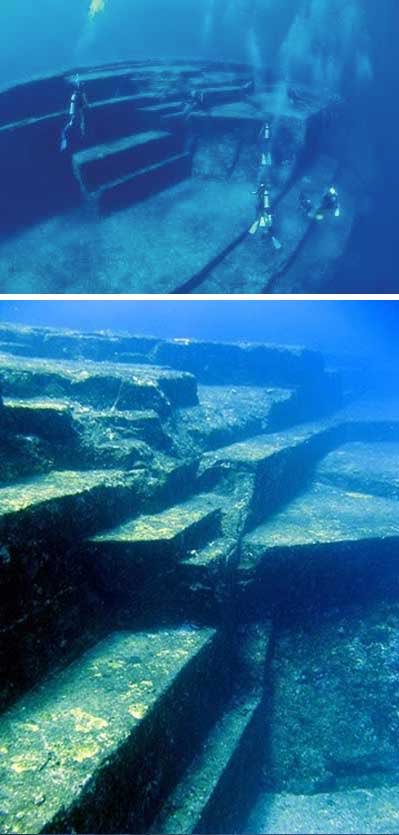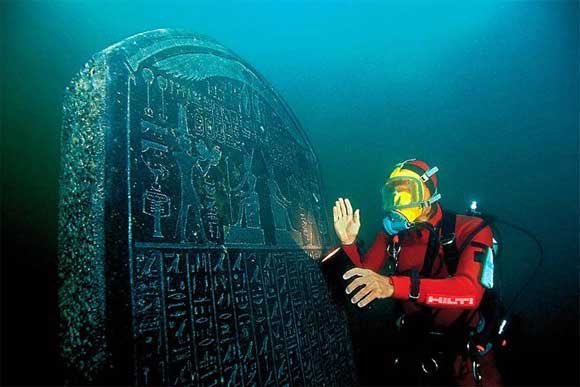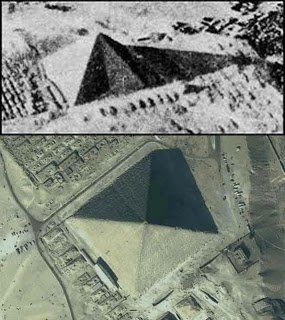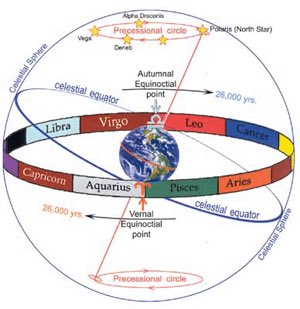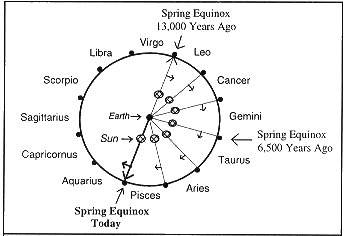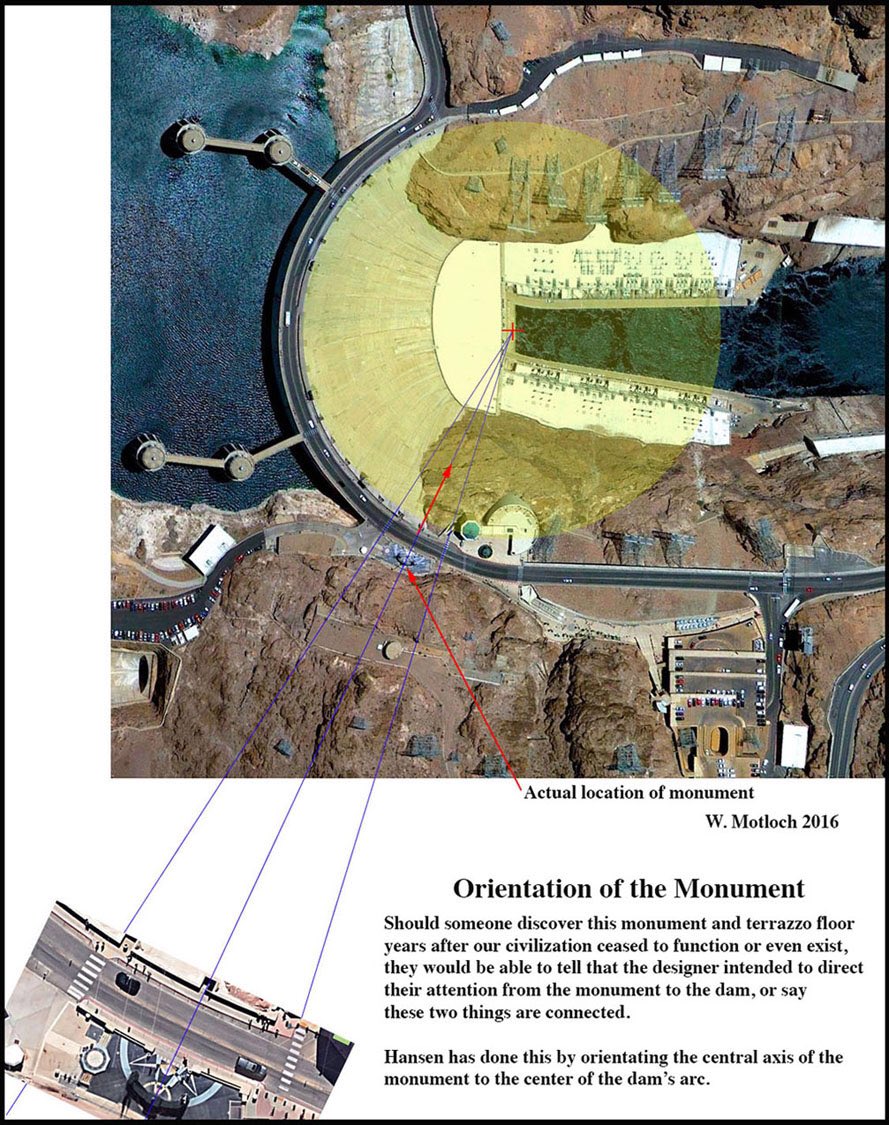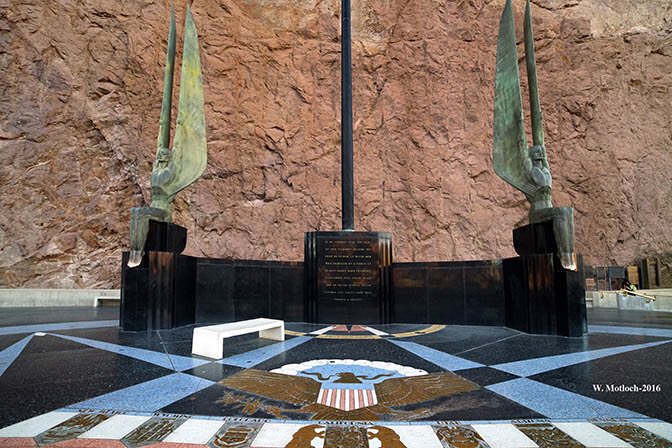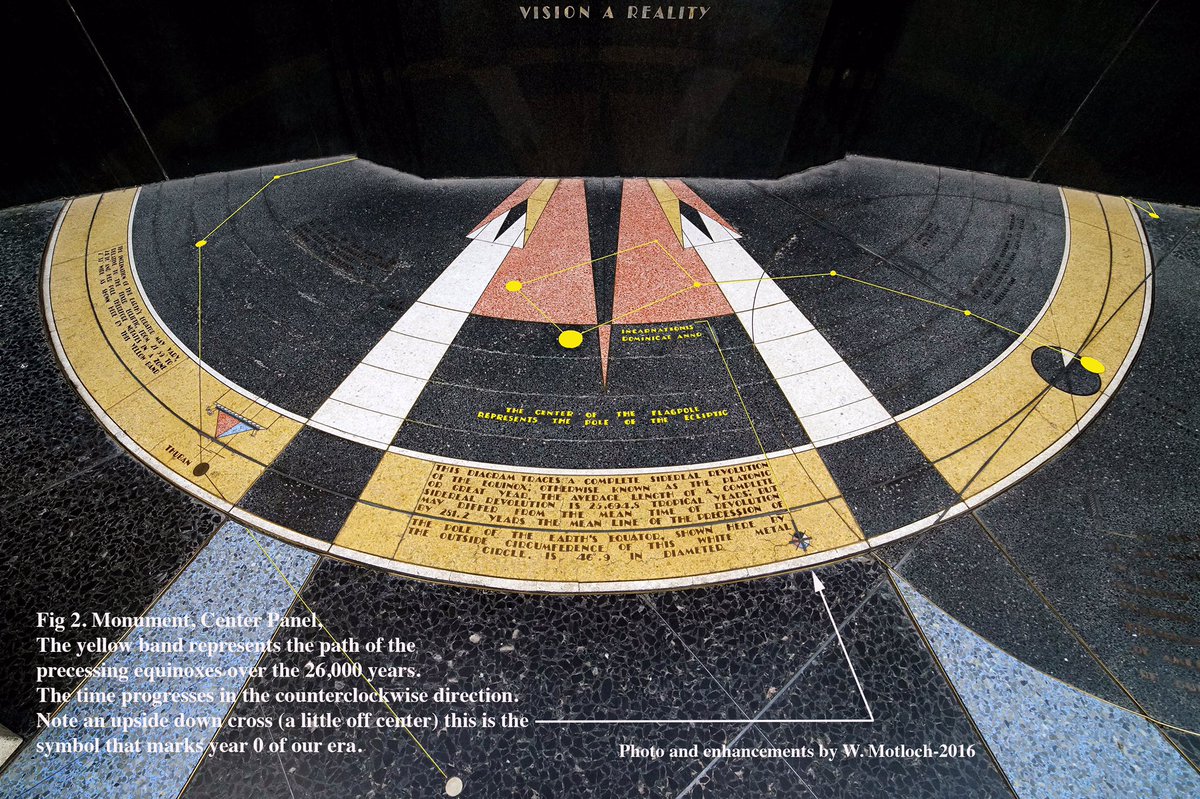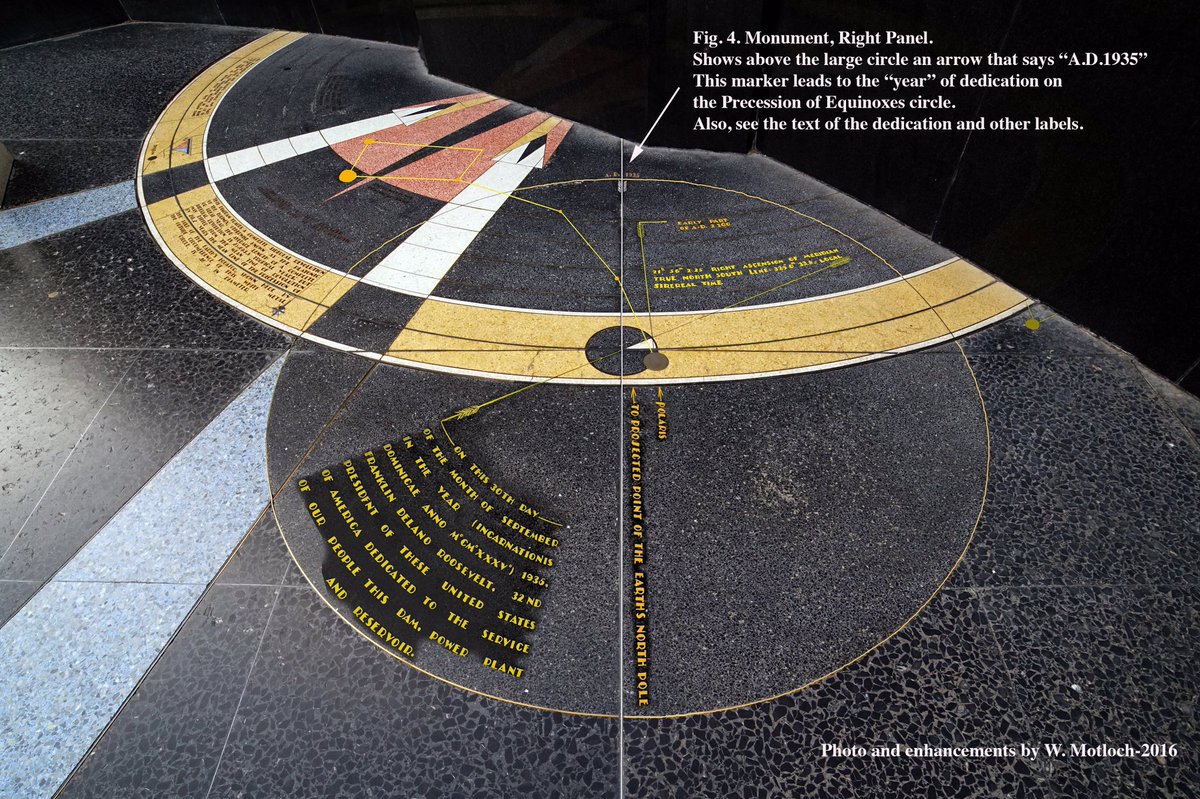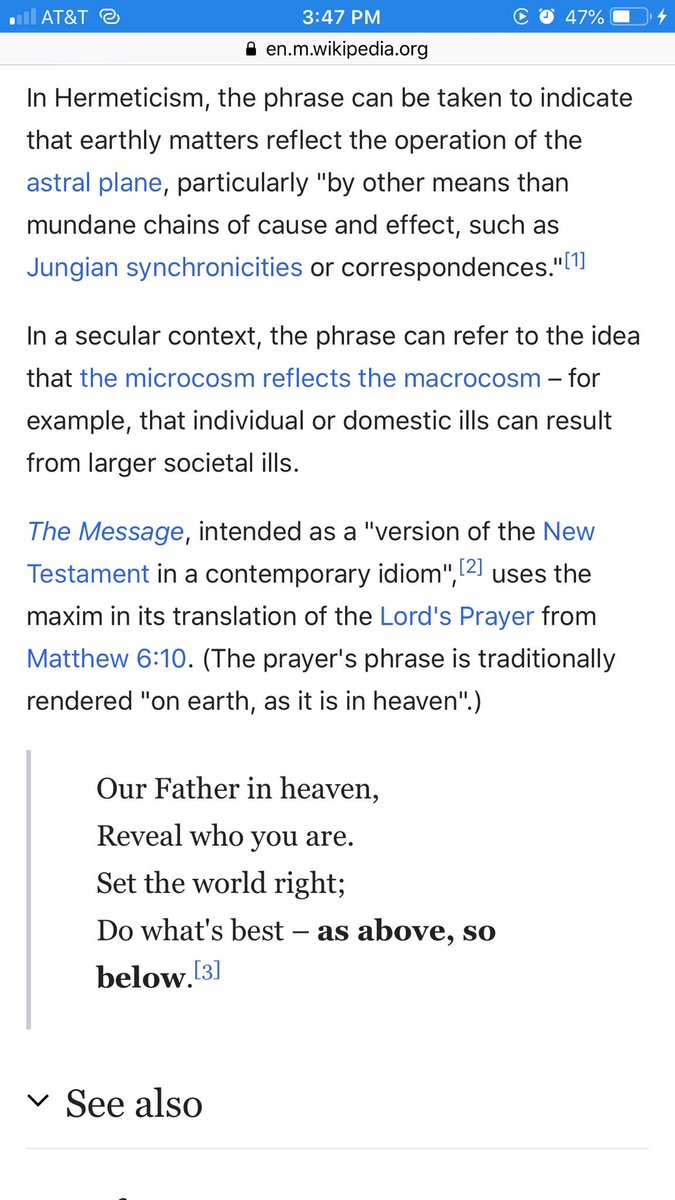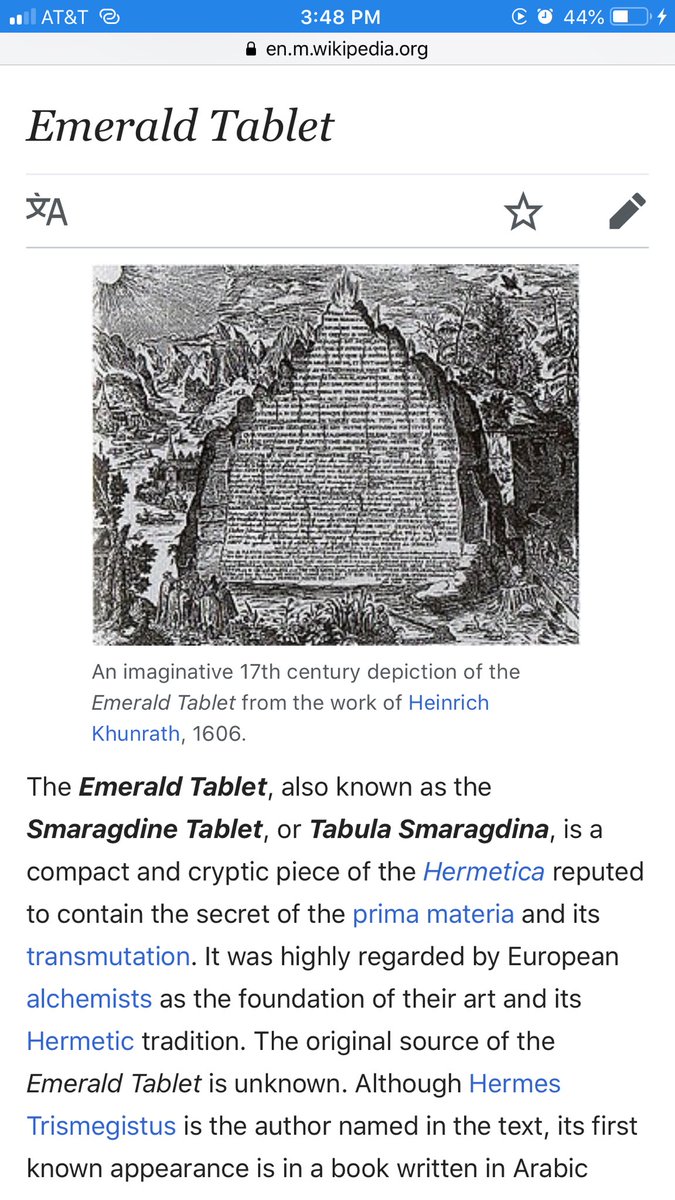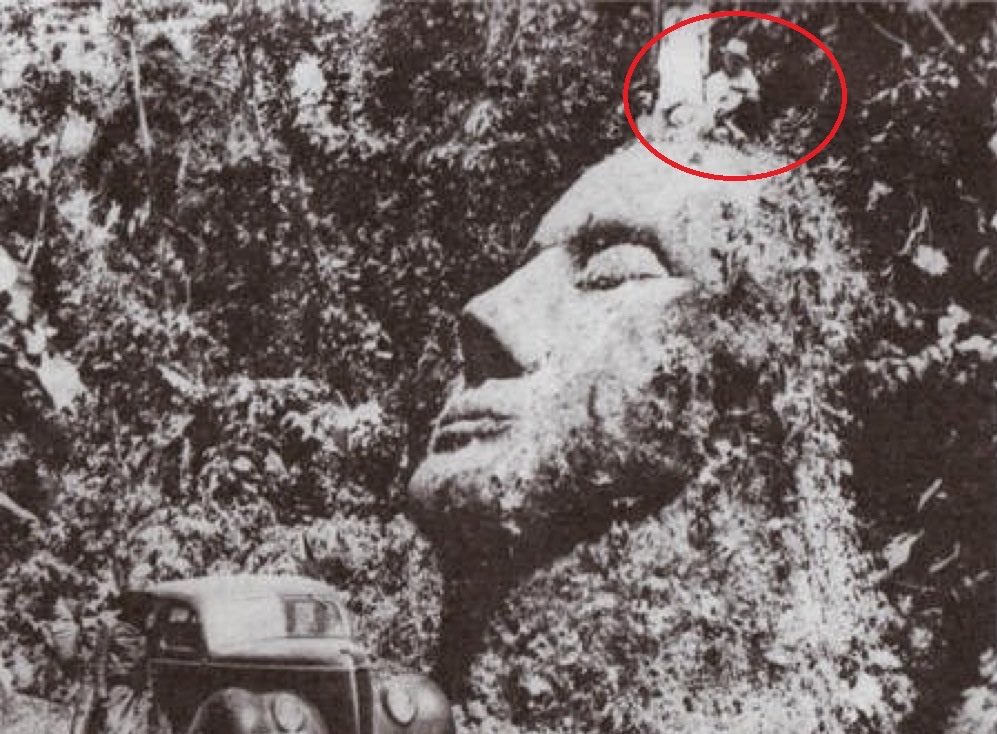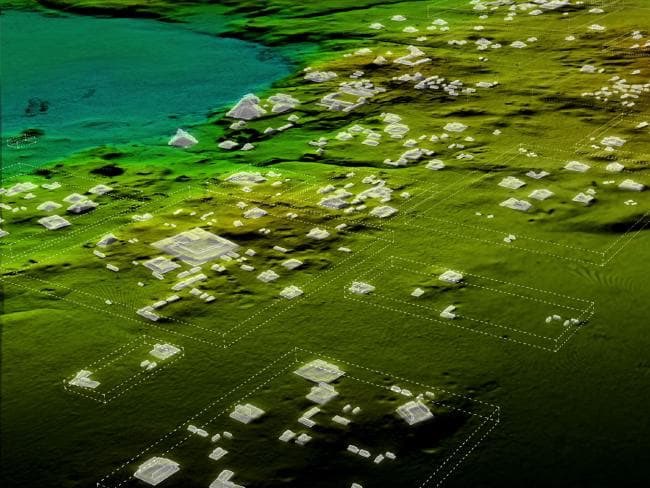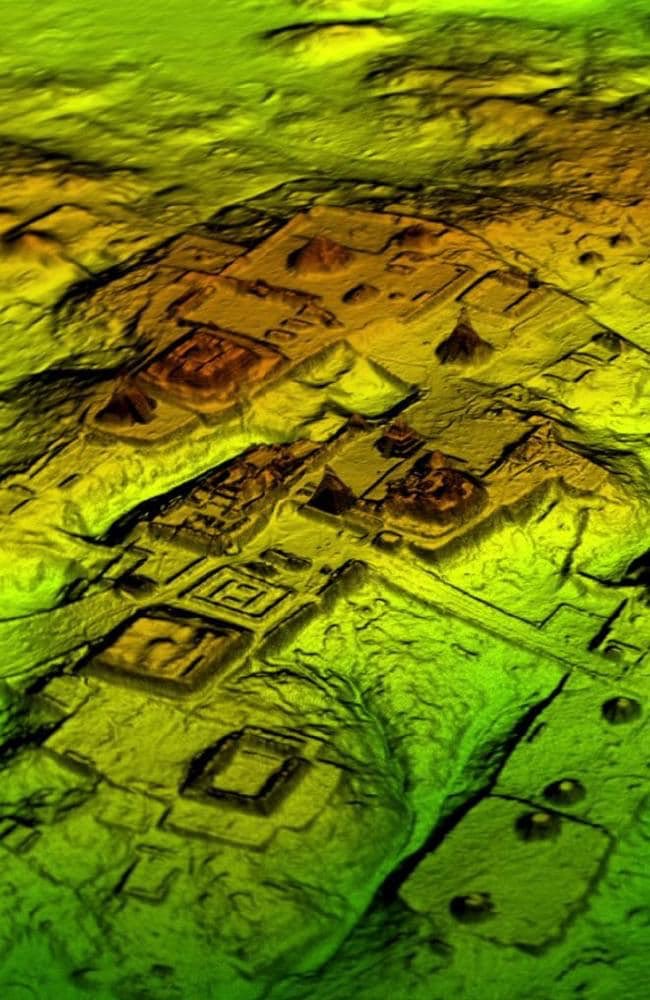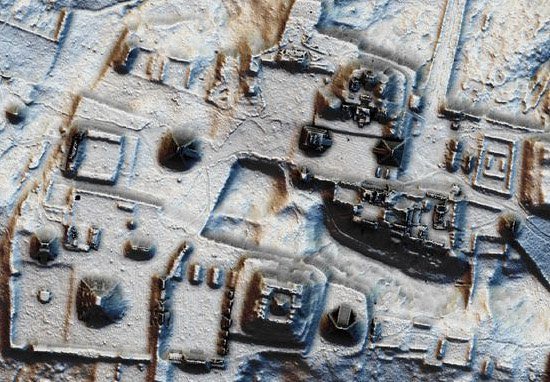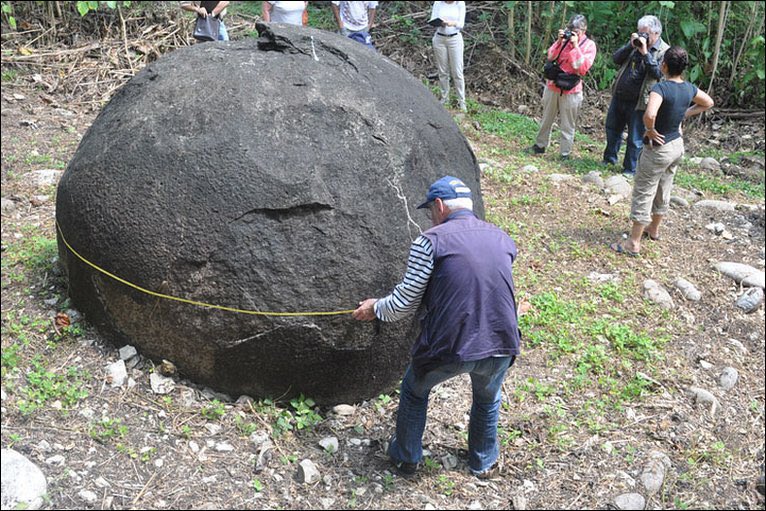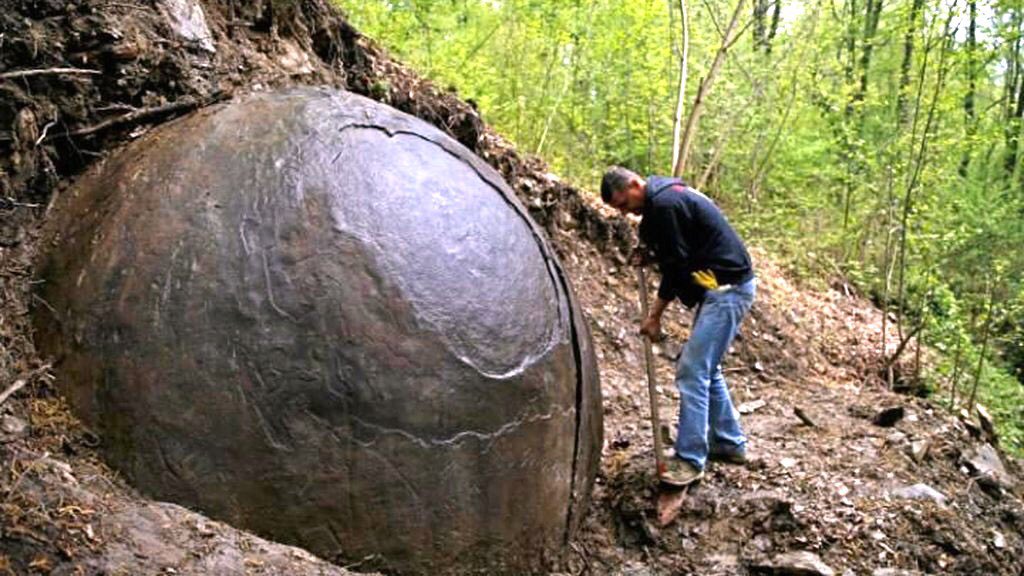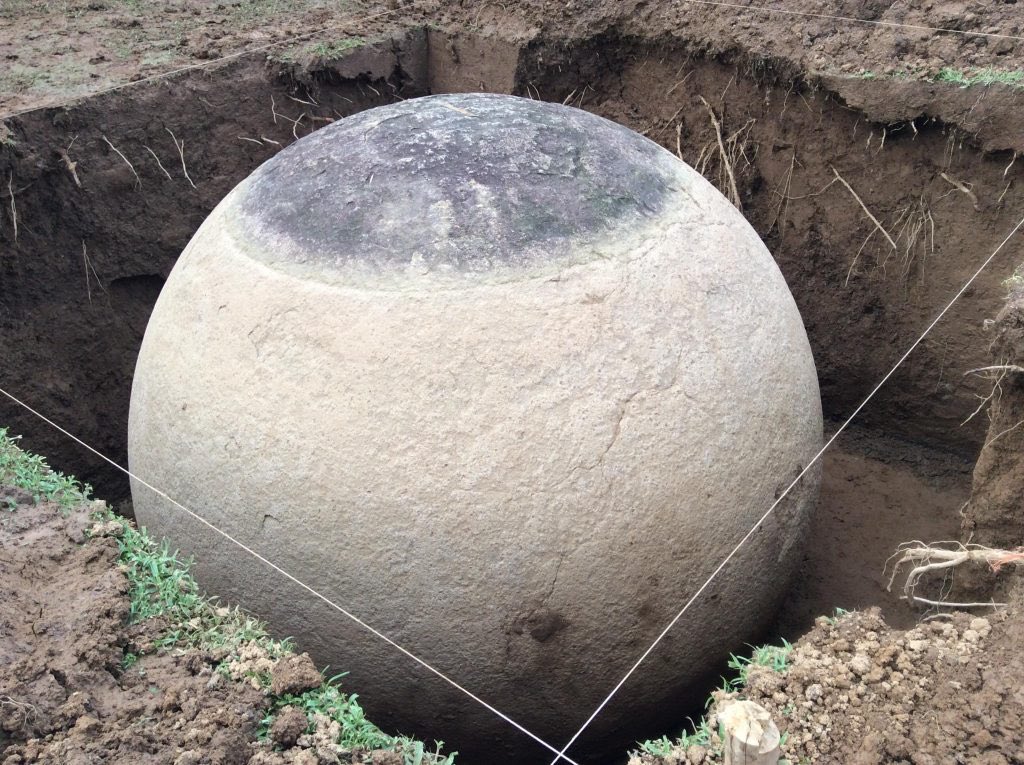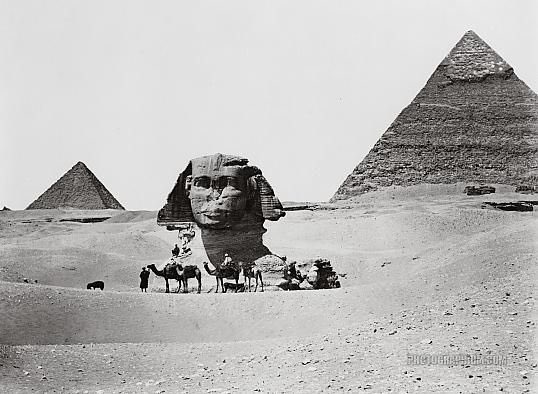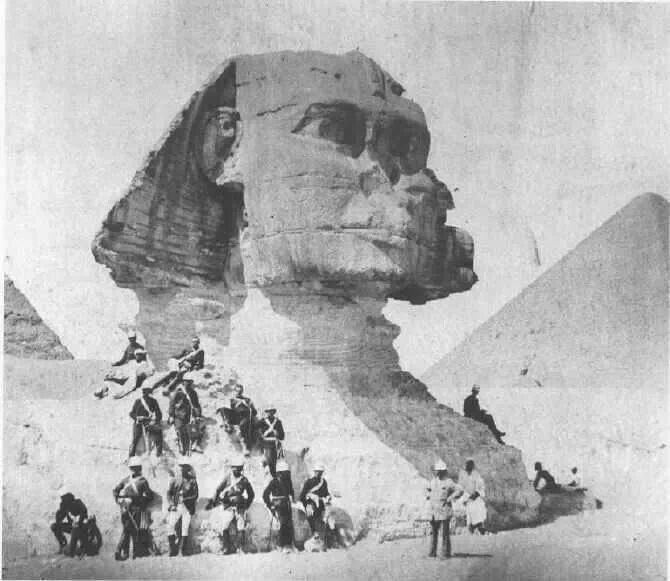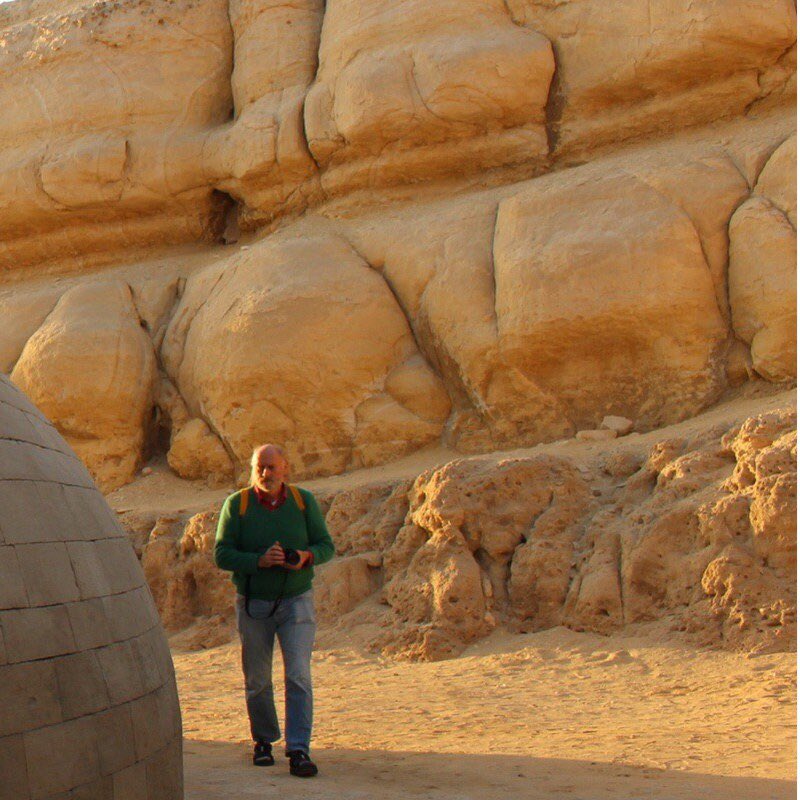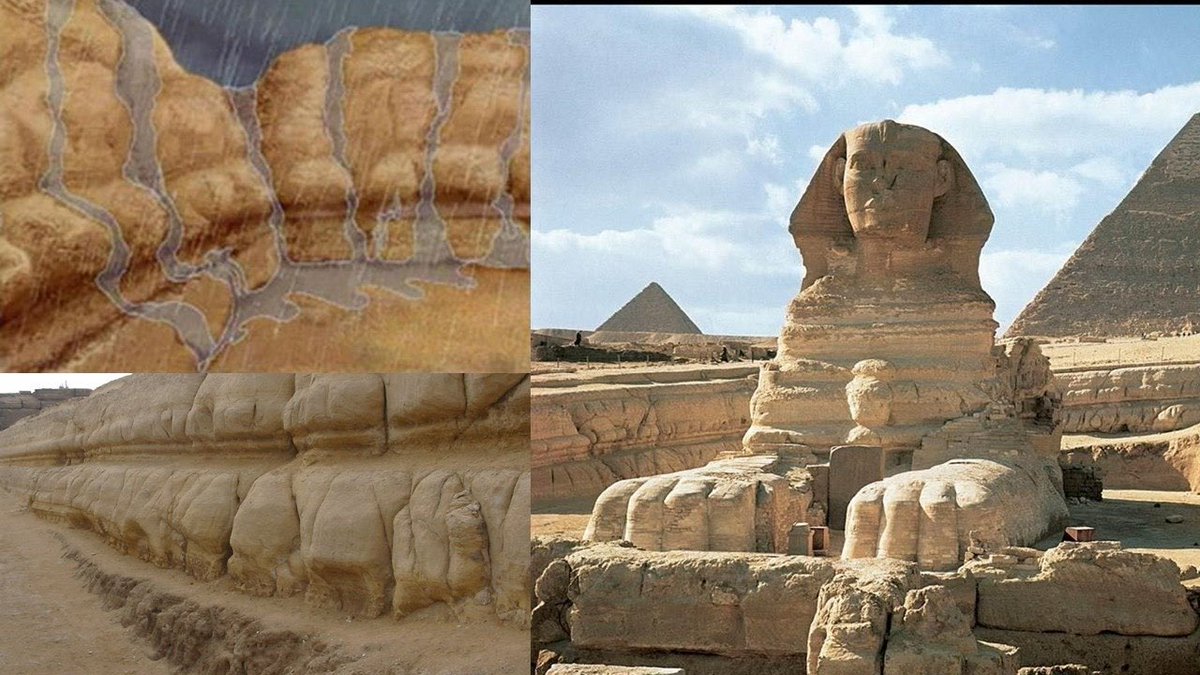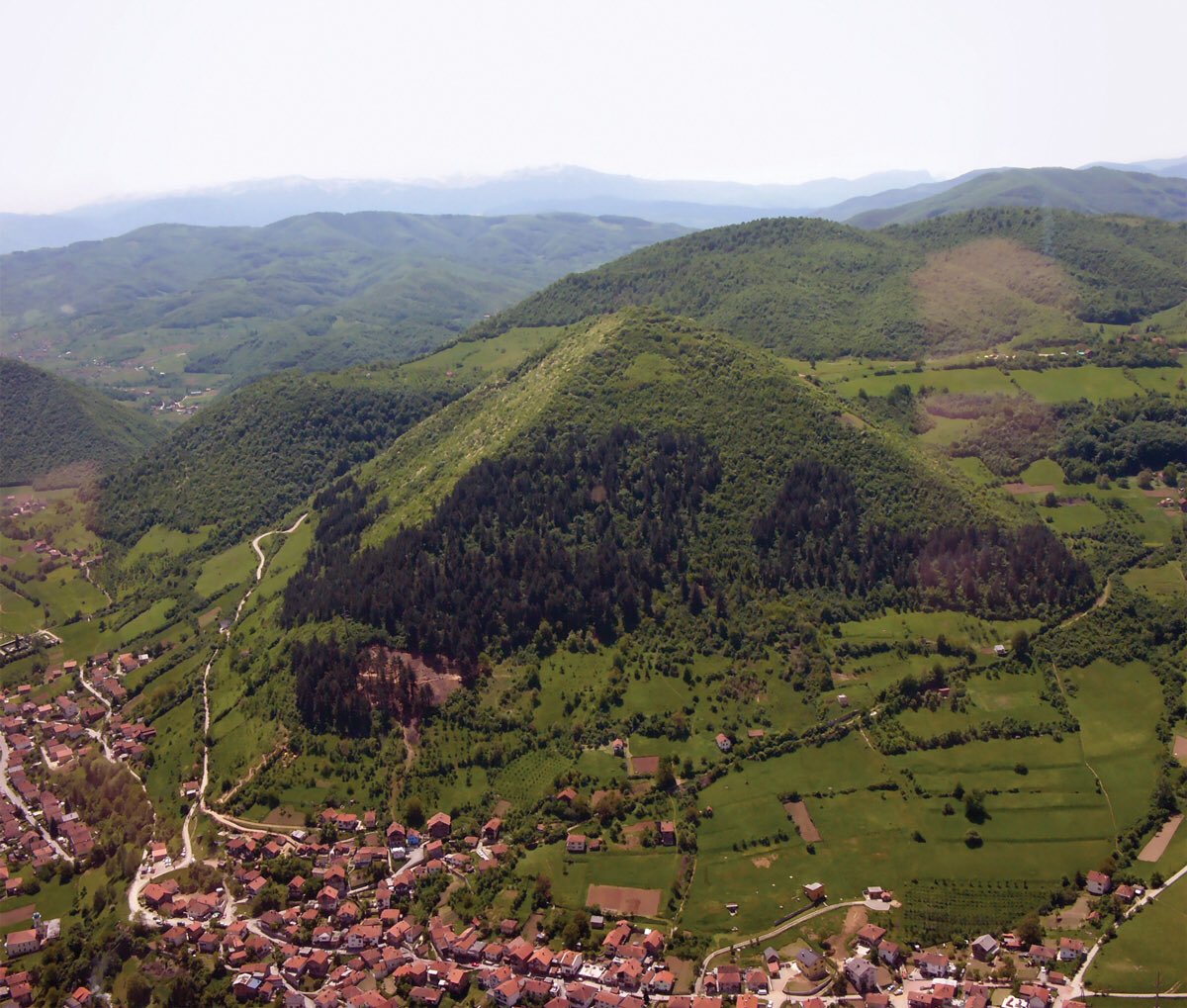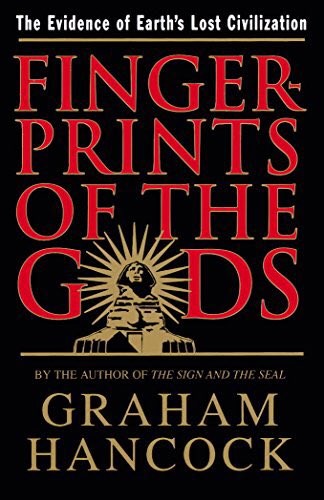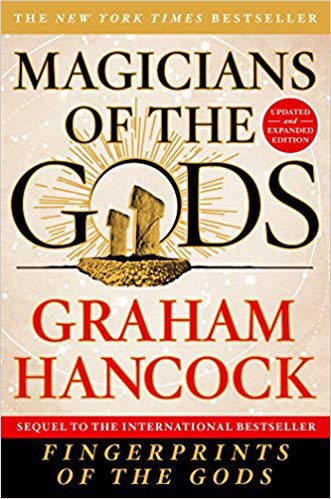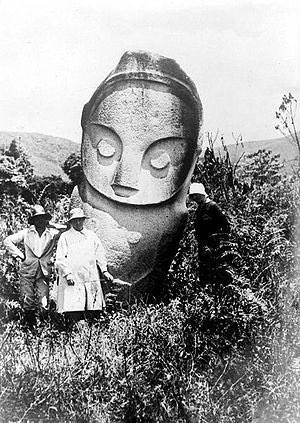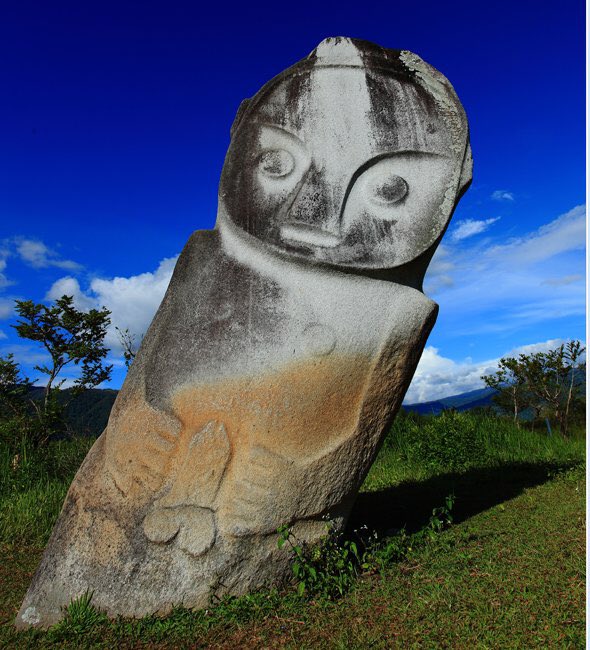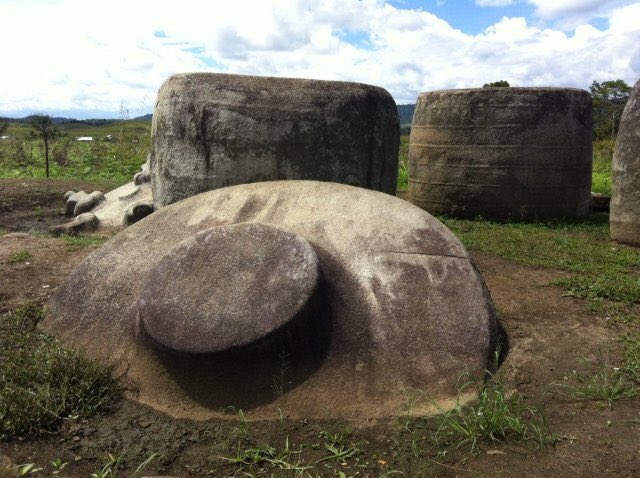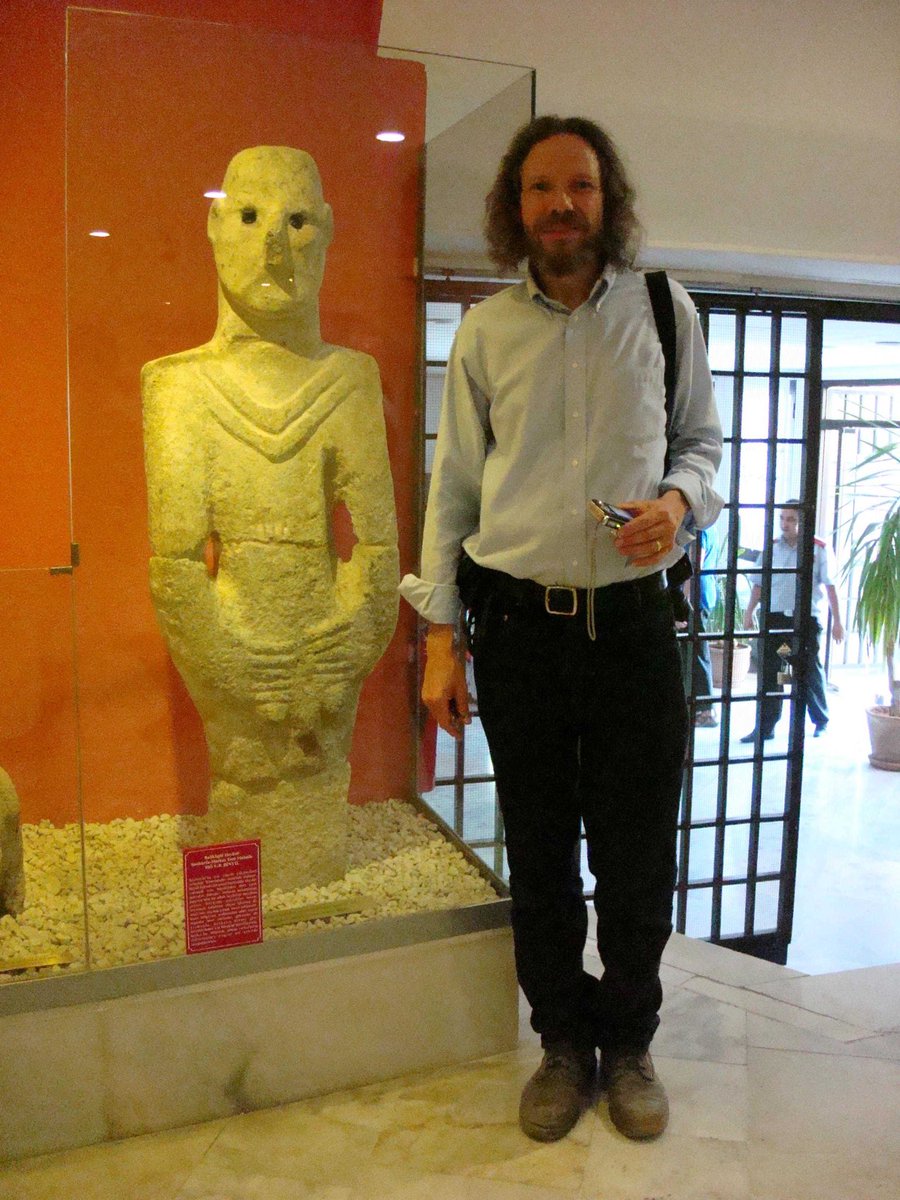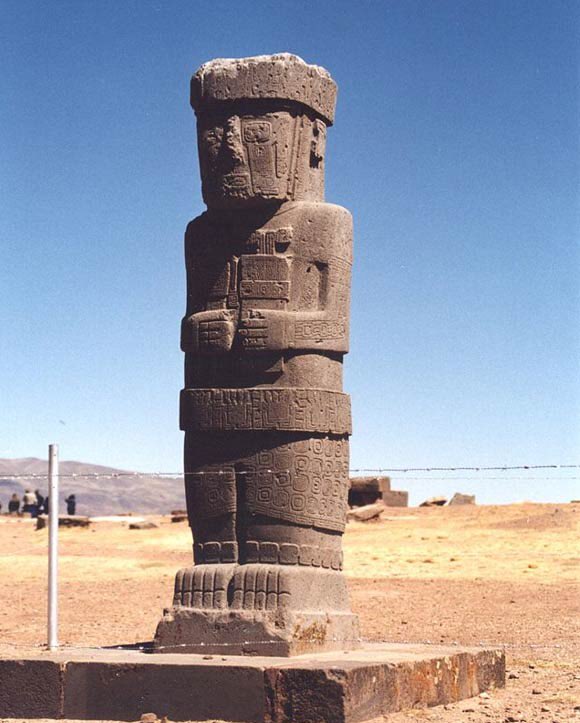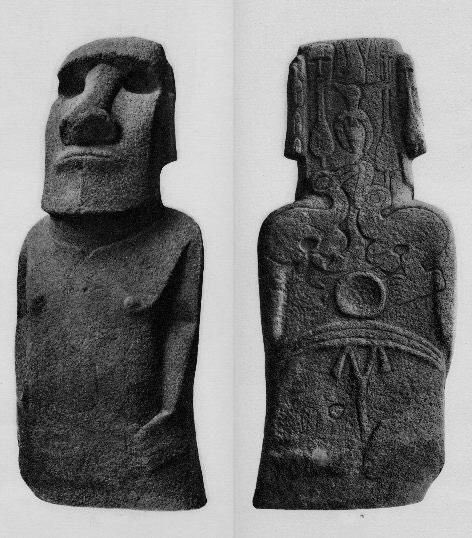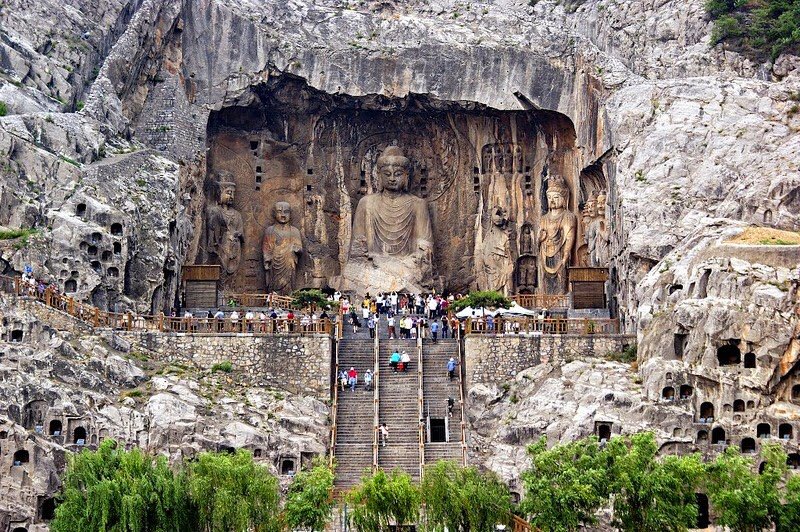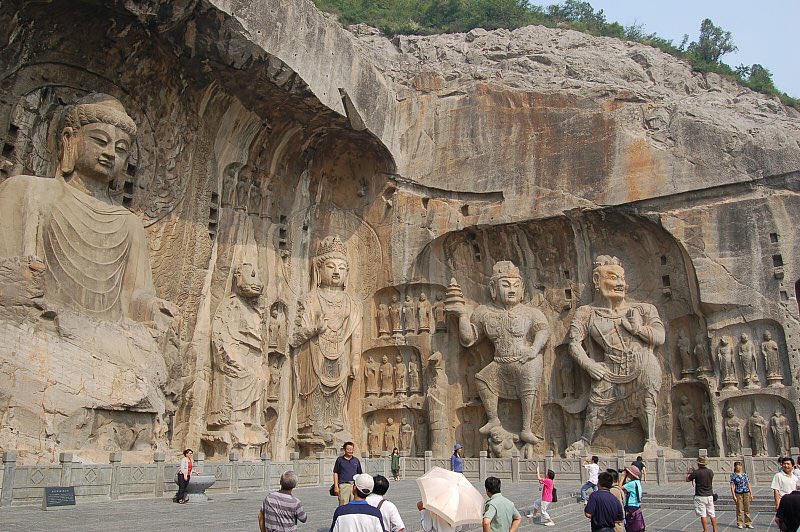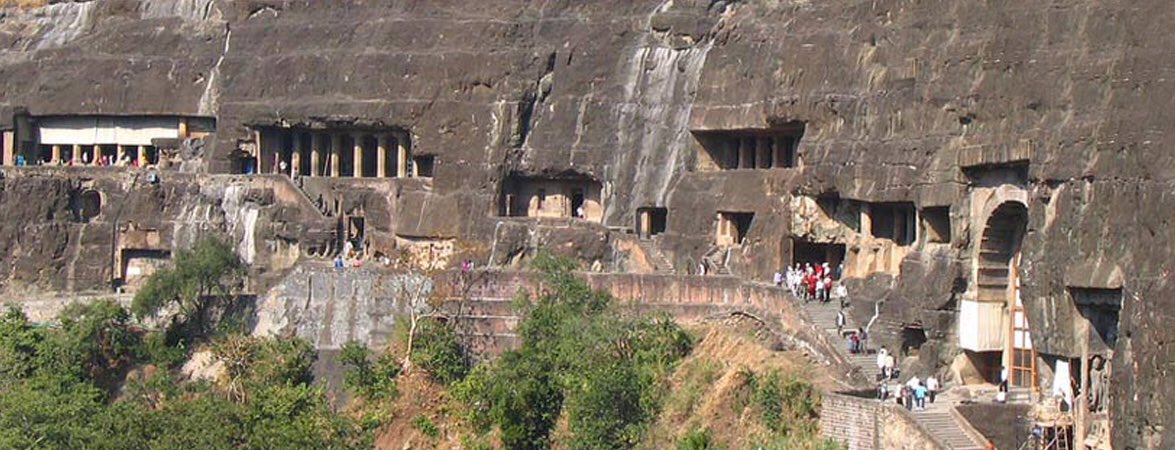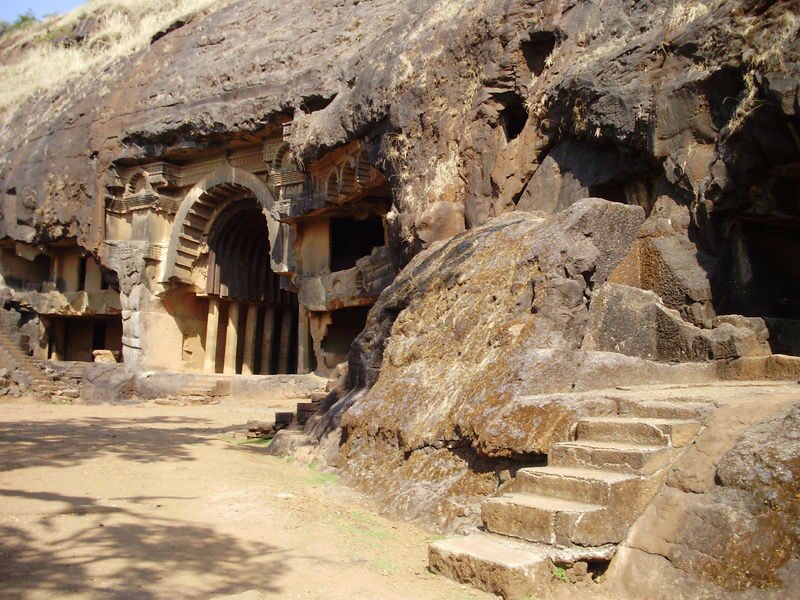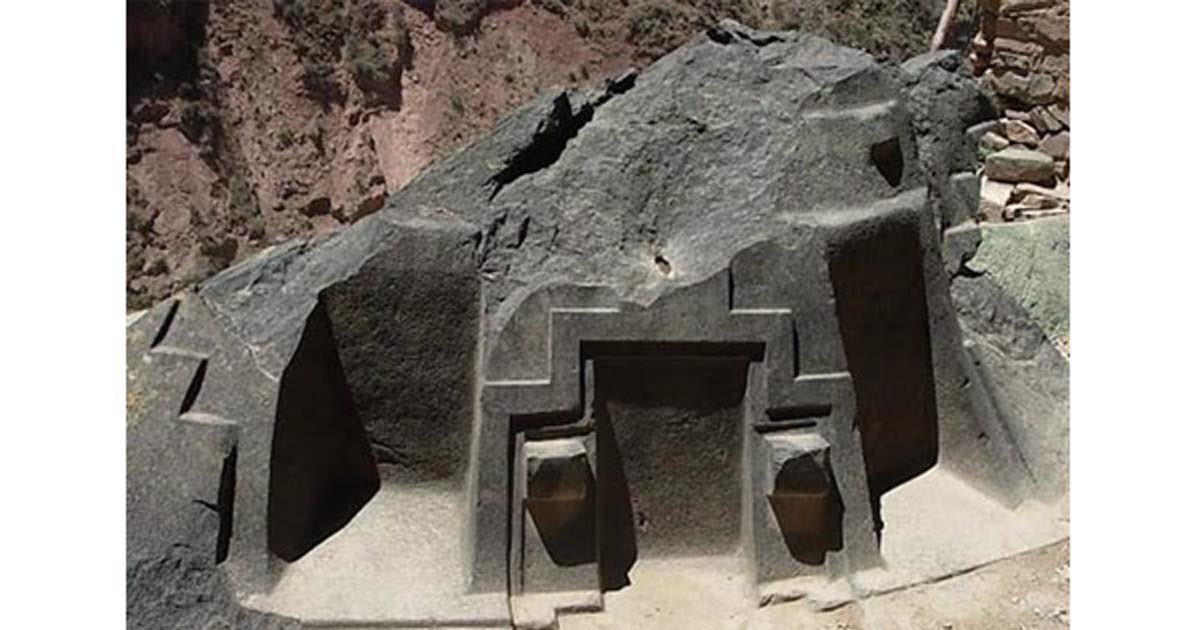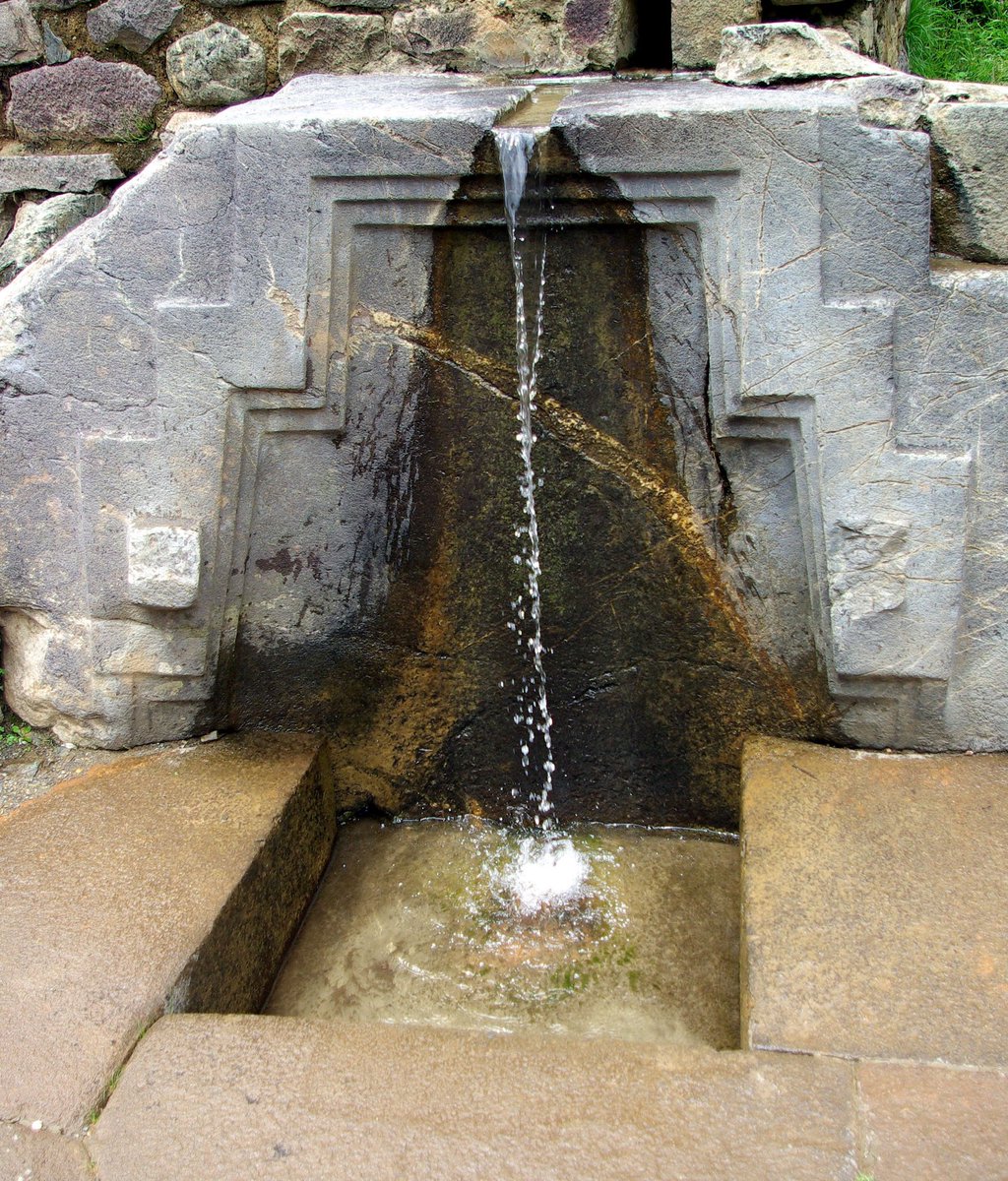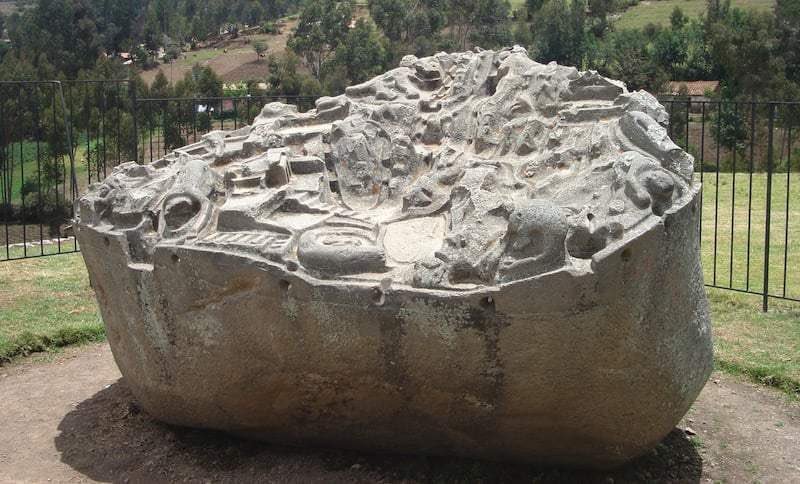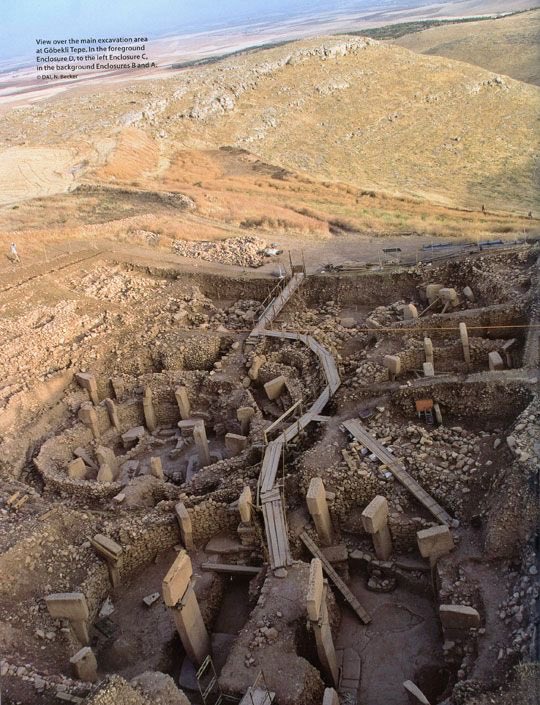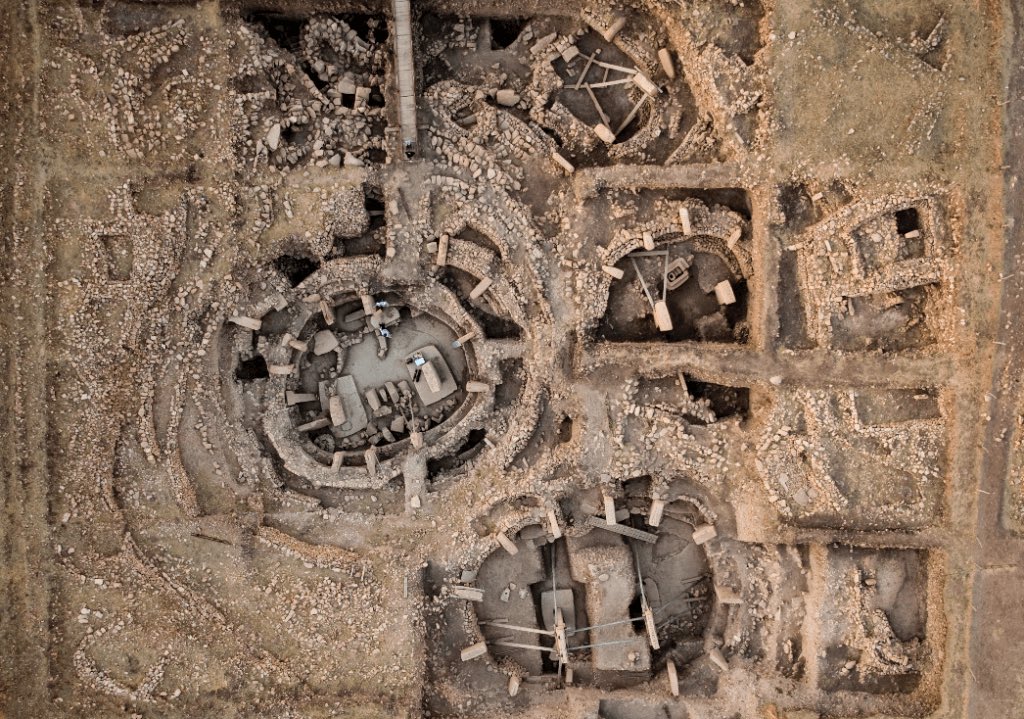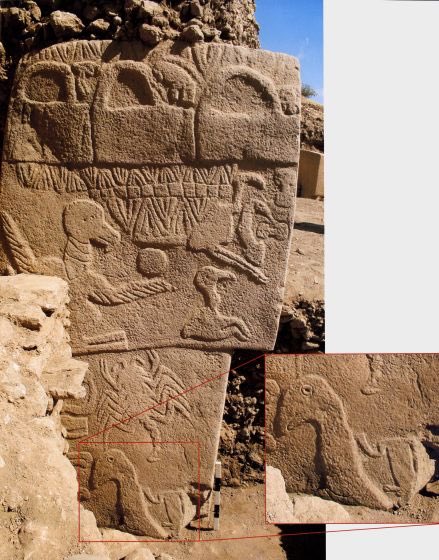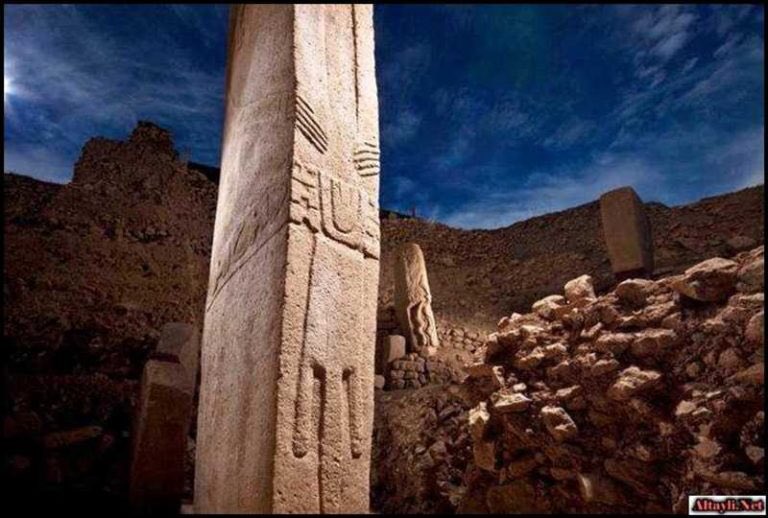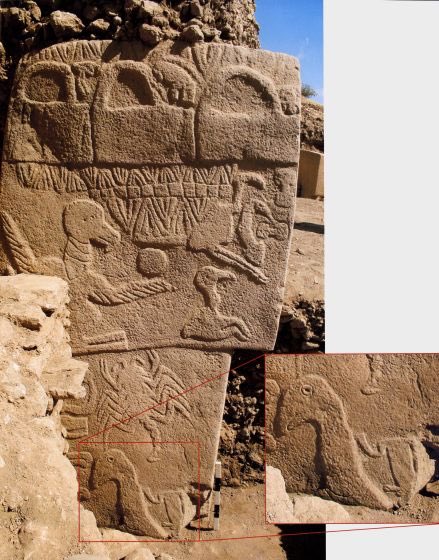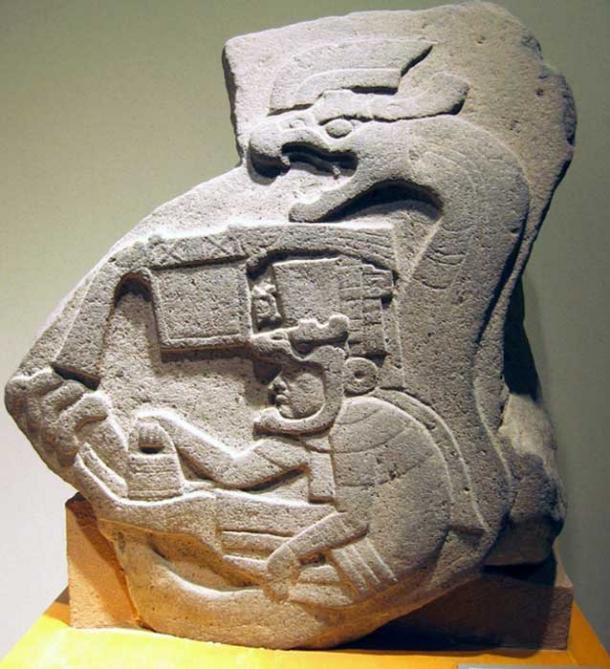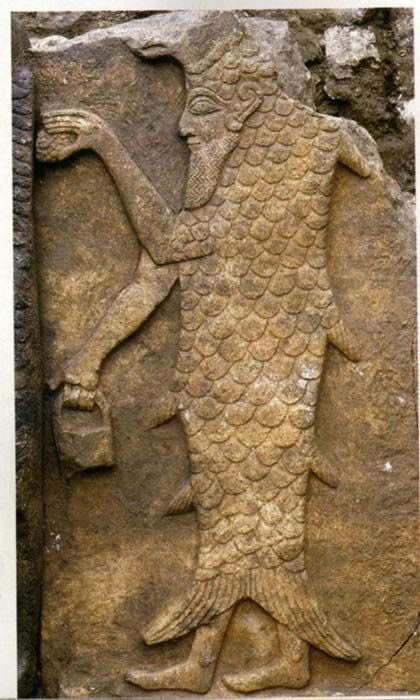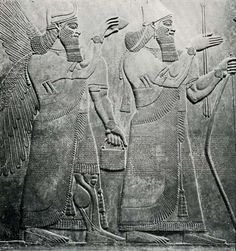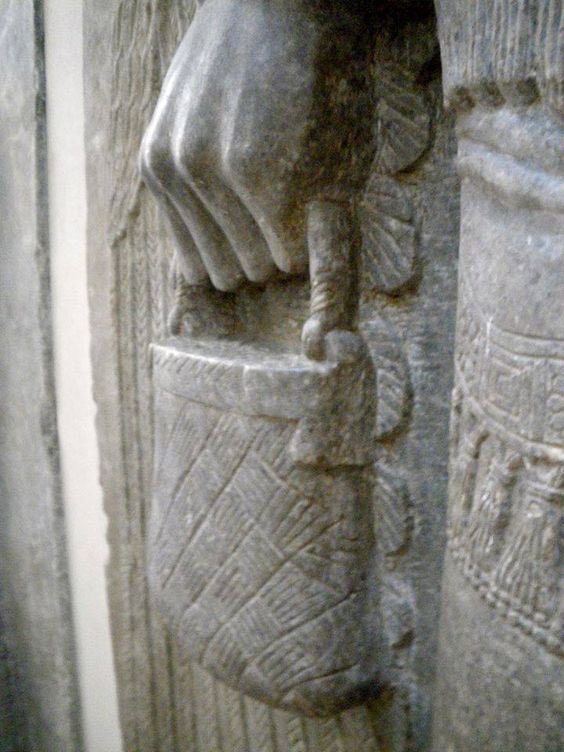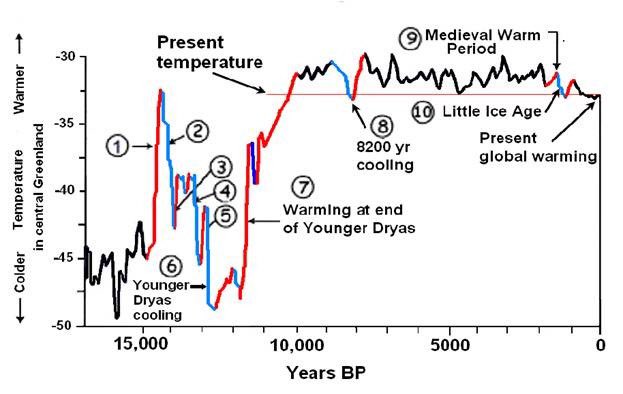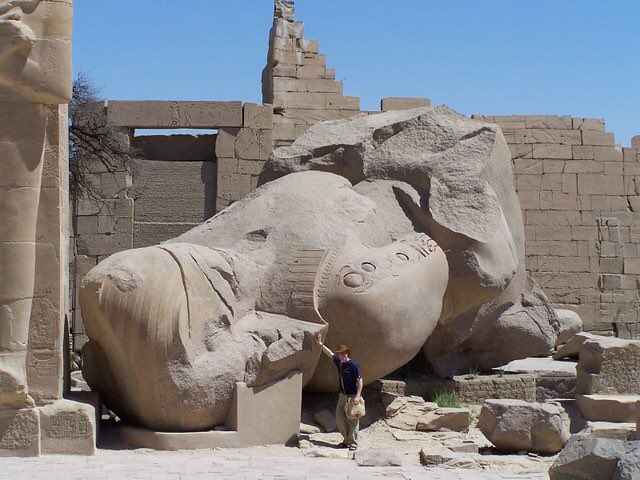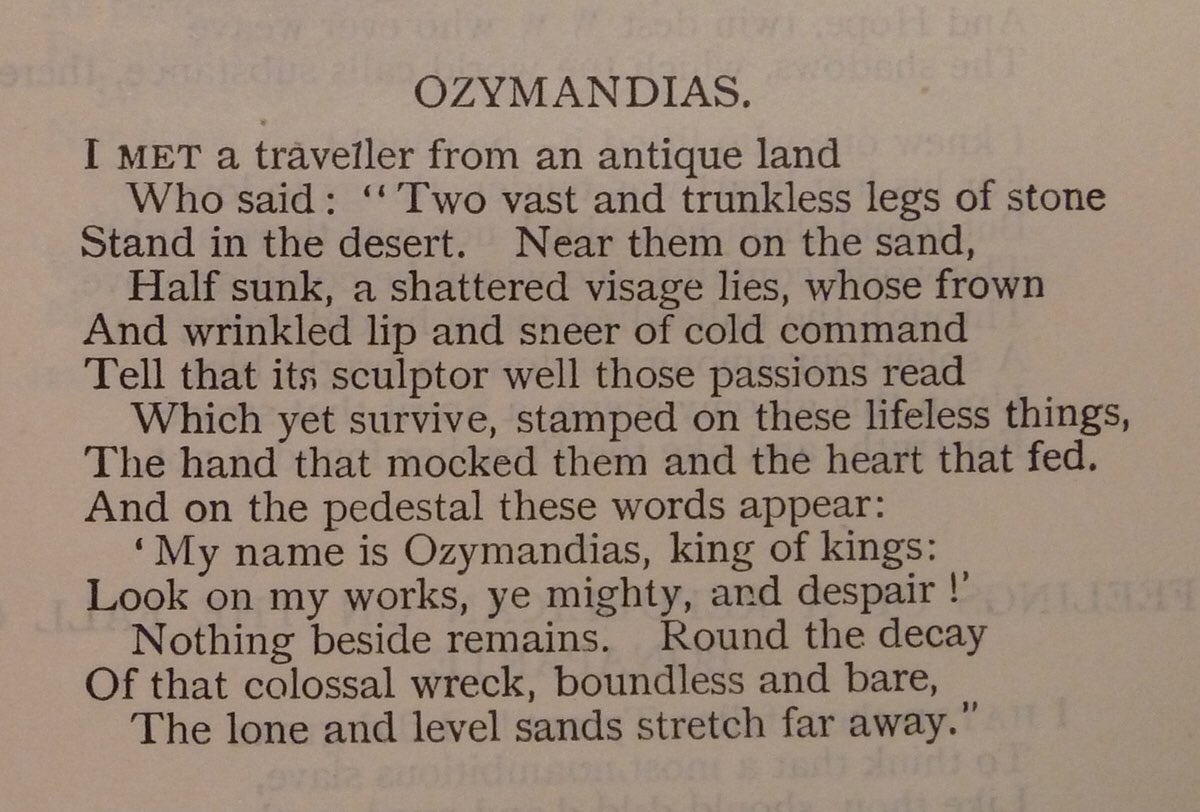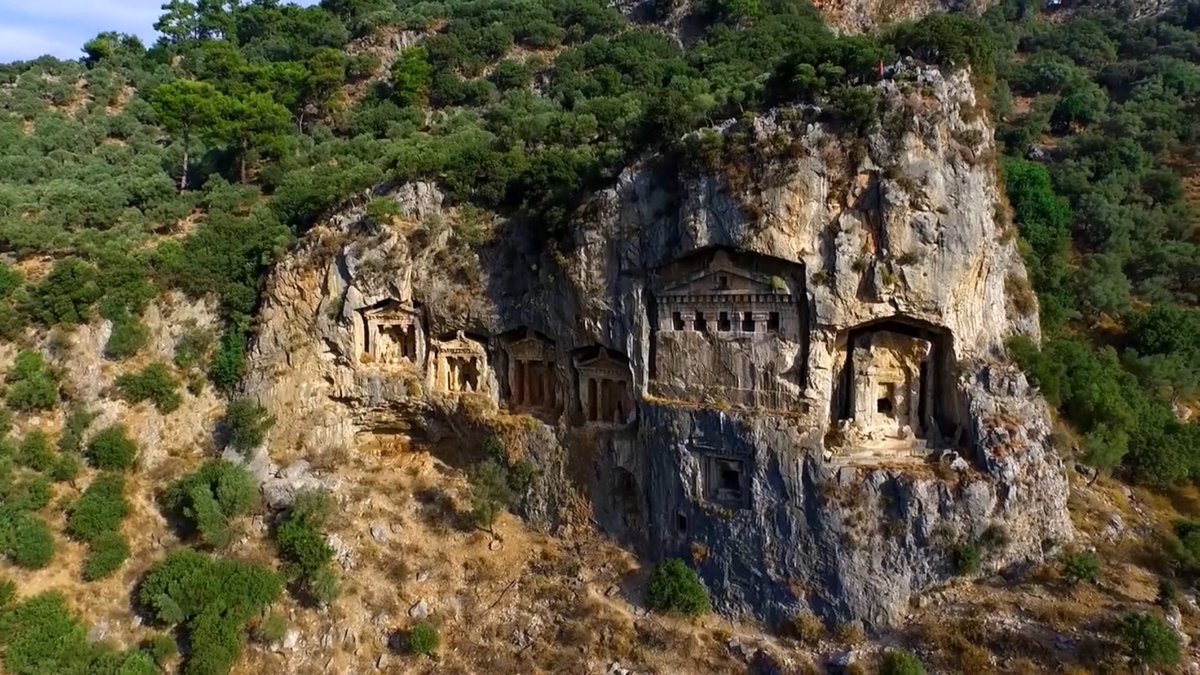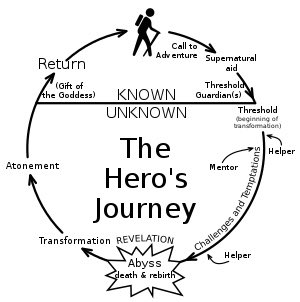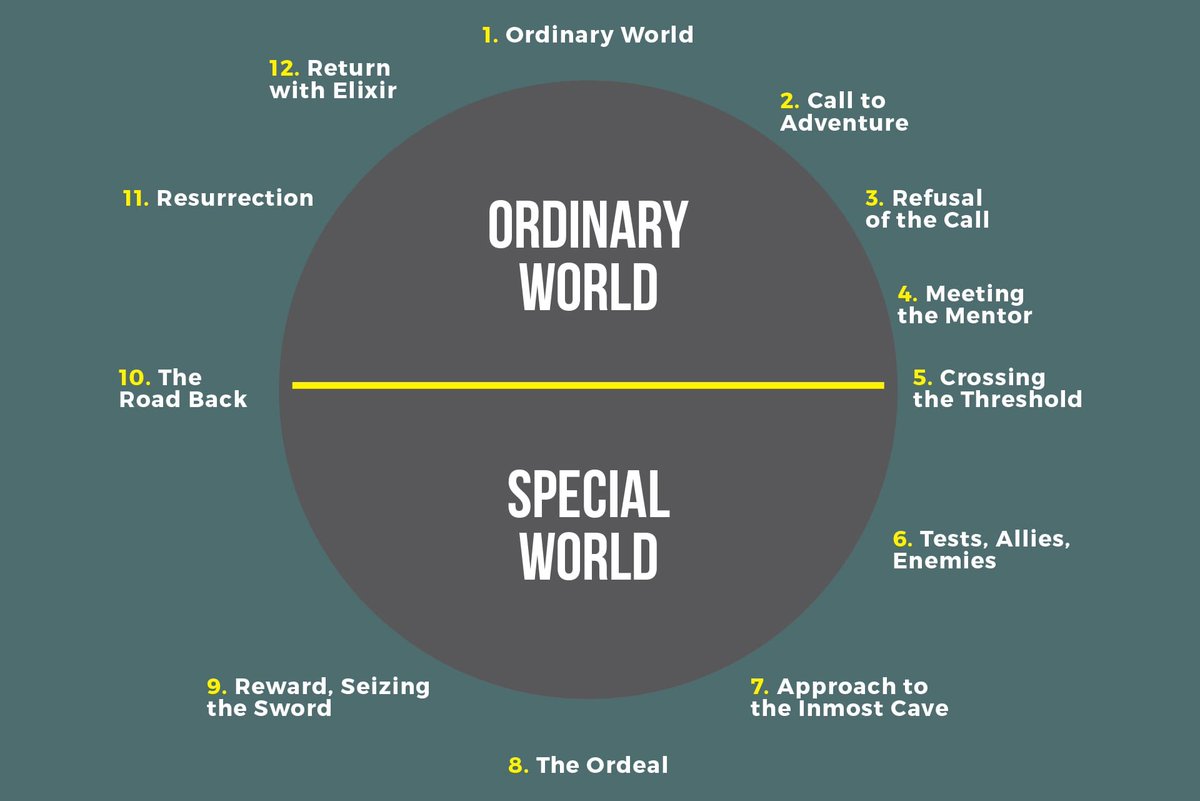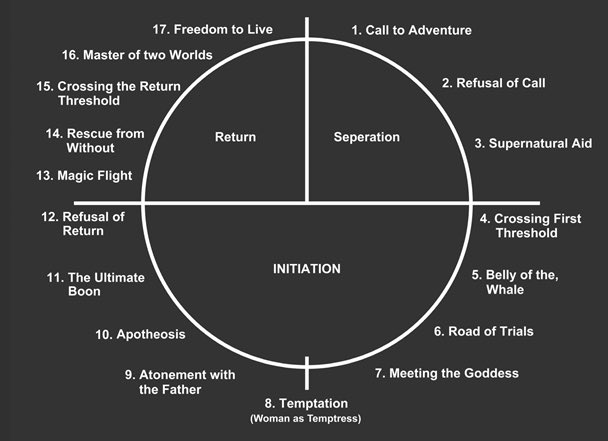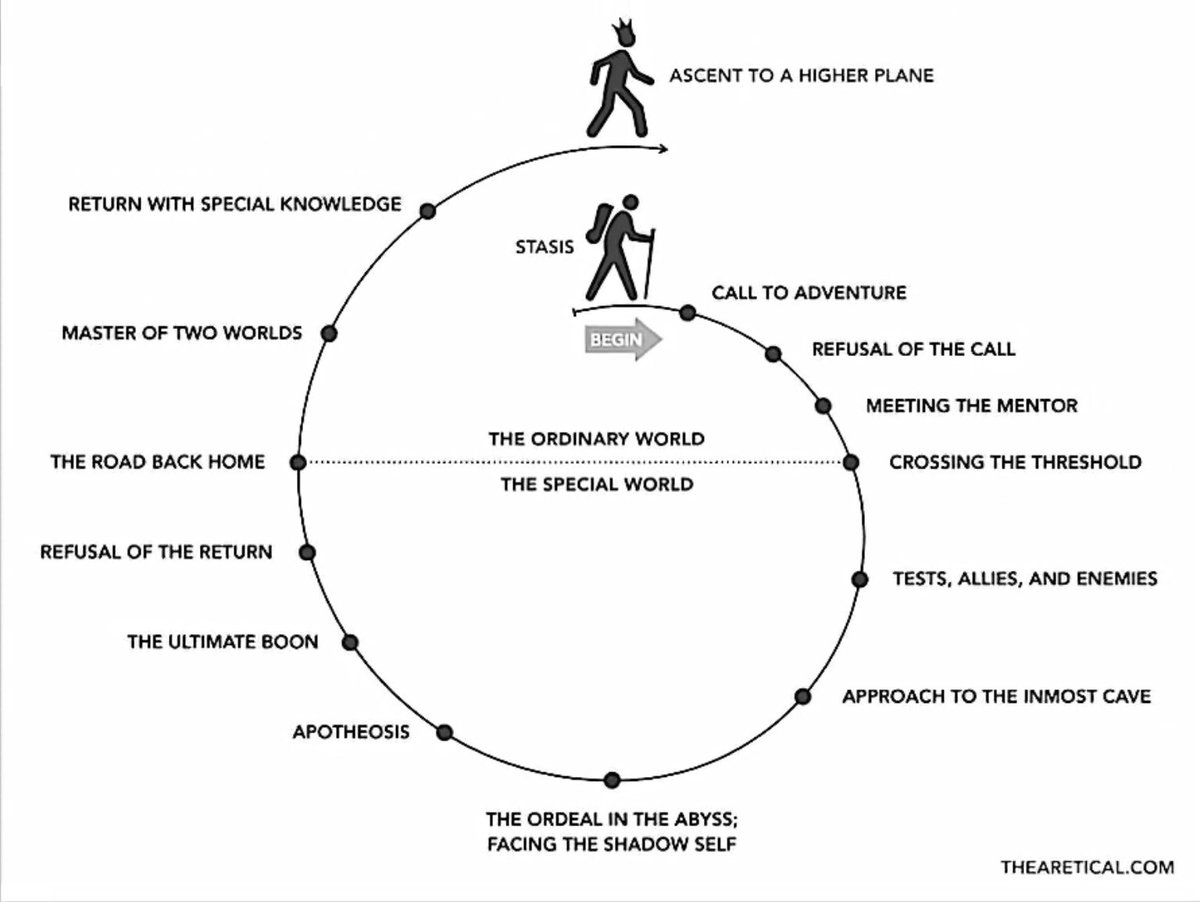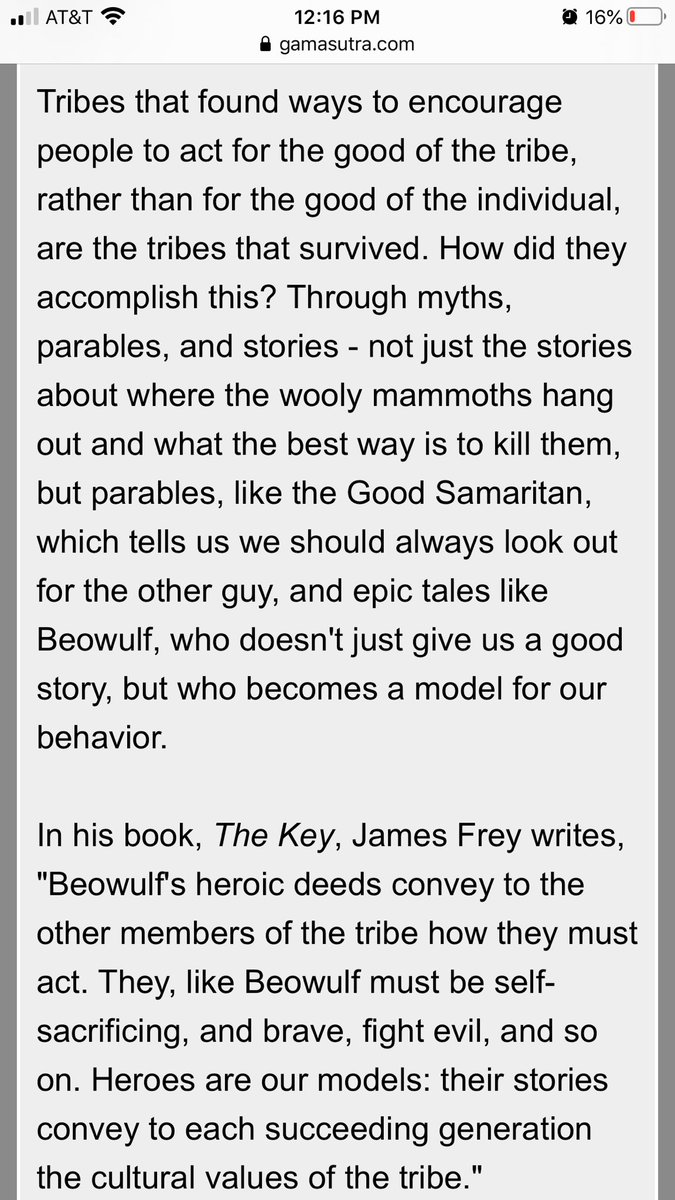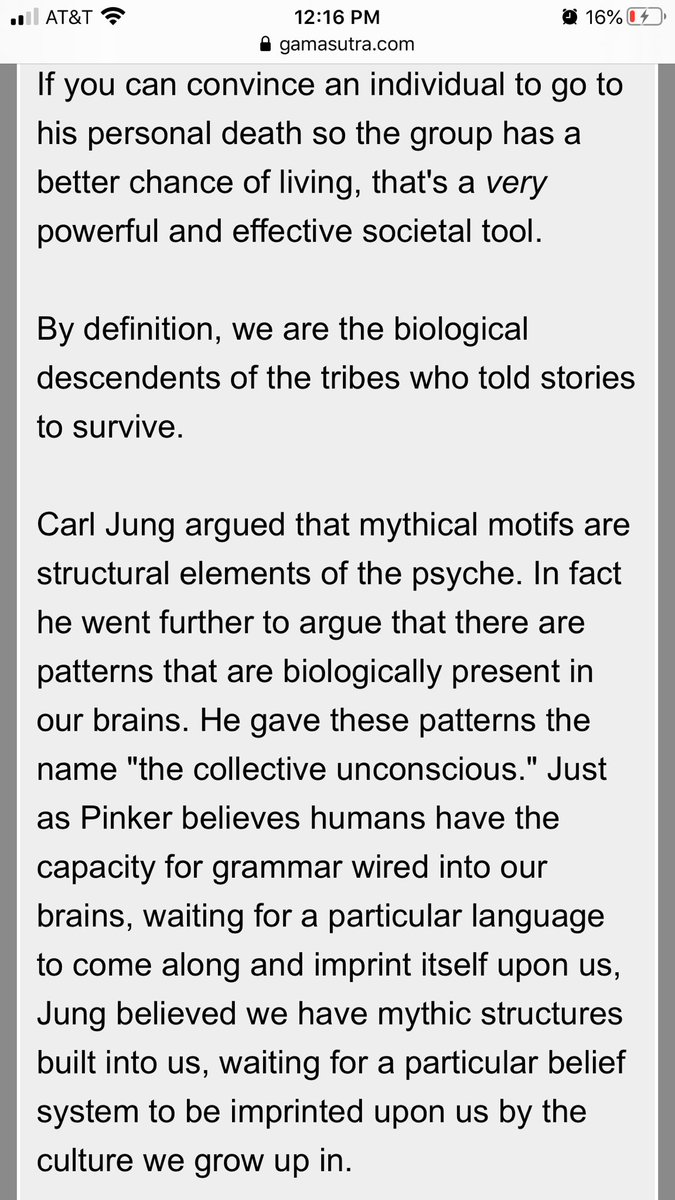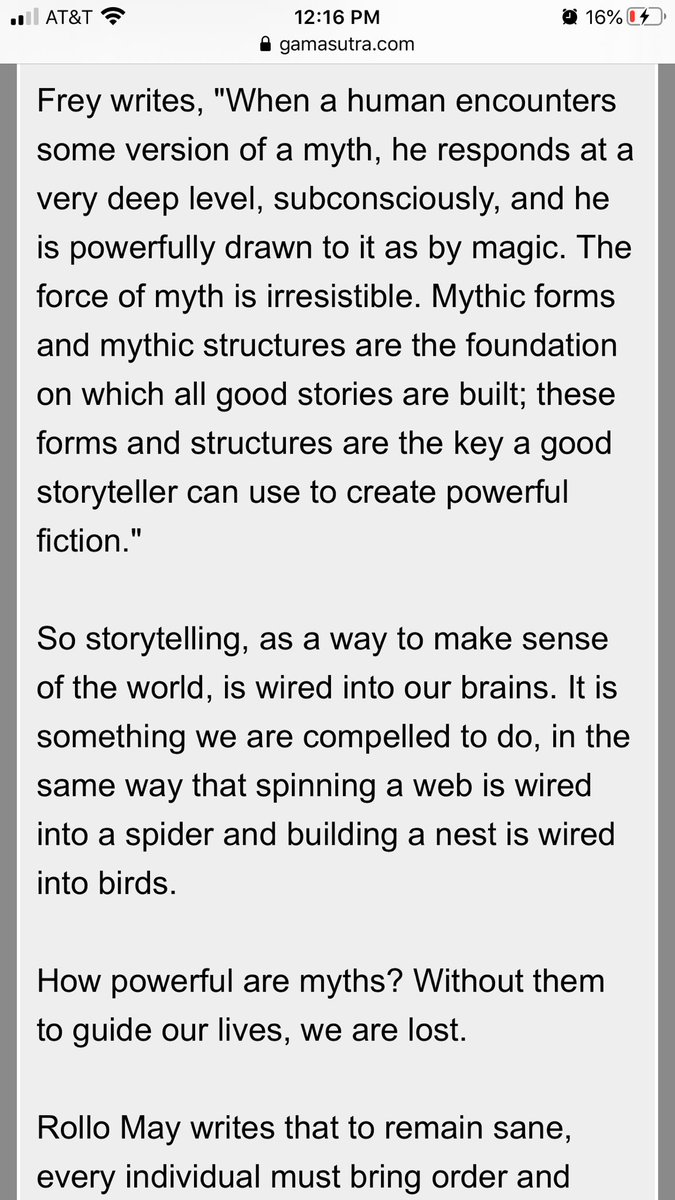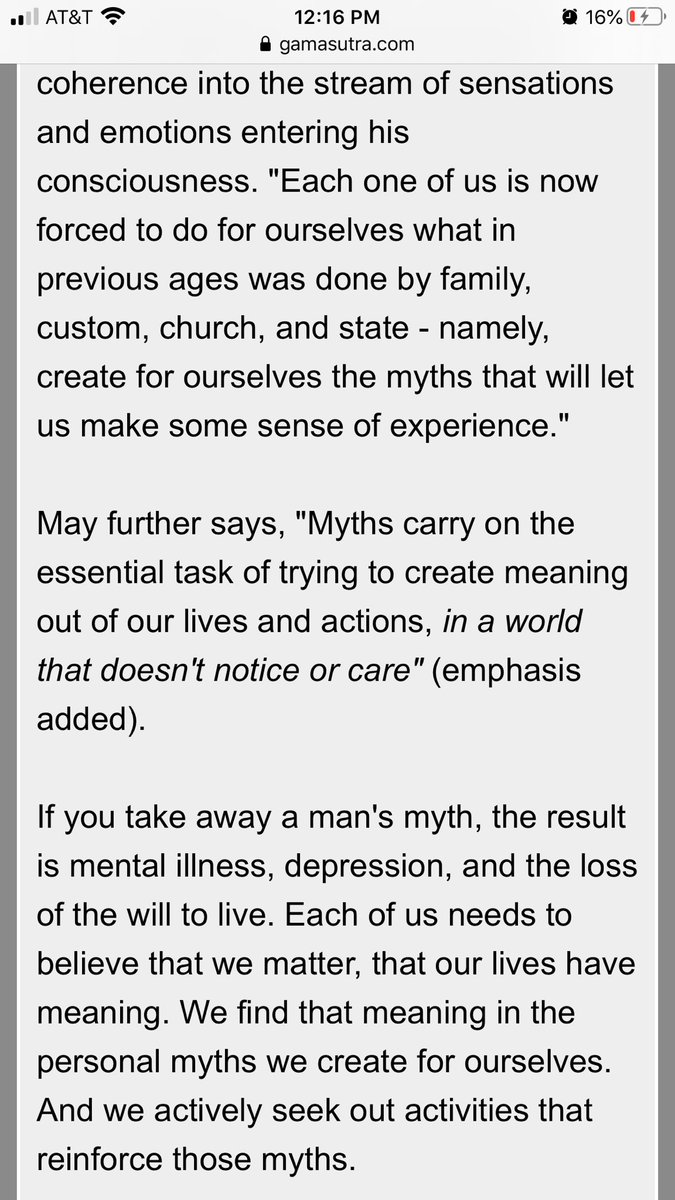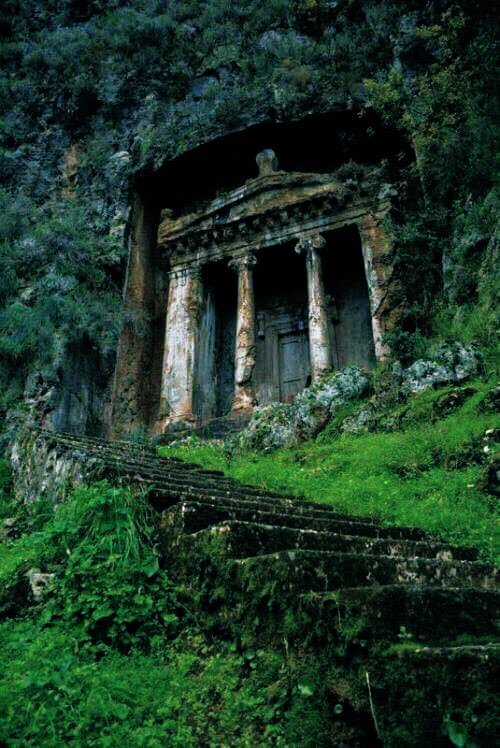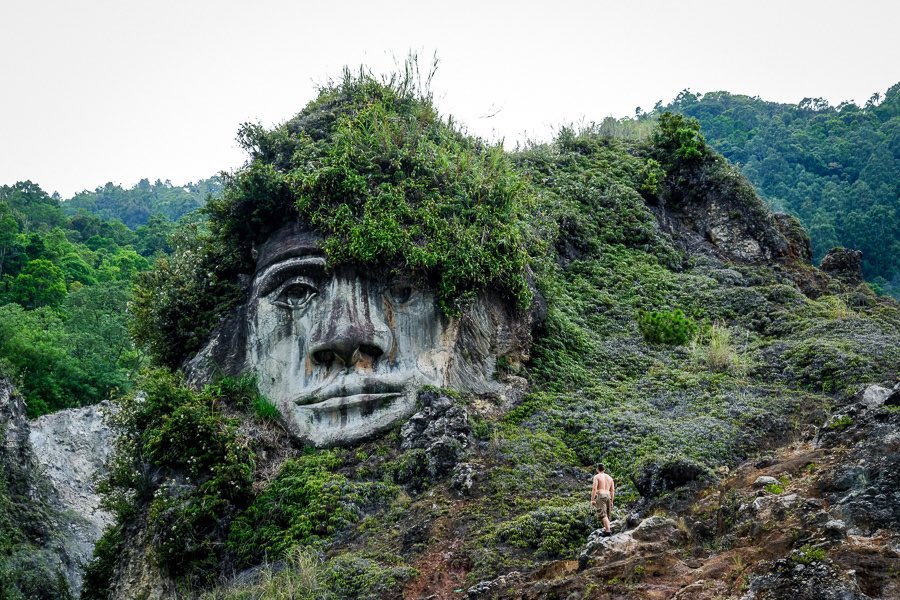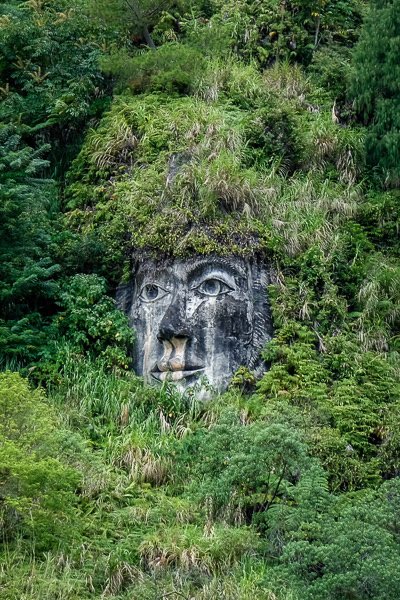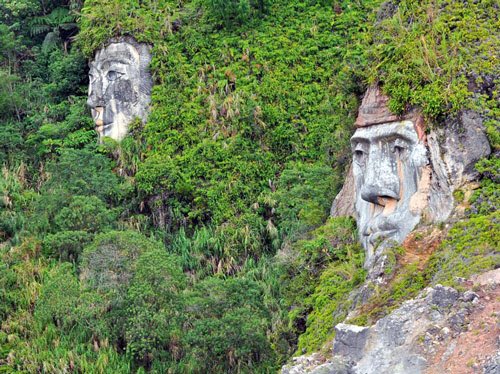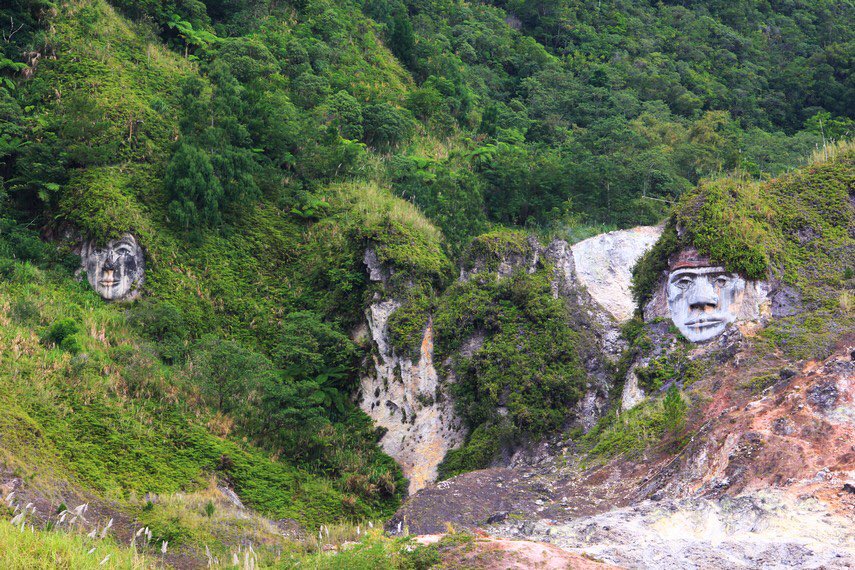The following thread is going to be dedicated to what I feel is the most important mystery of our time: a lost ancient civilization(s), evidence of whom can be seen in the stonework they left behind.
This is where it started for me: Puma Punku. The first time I saw these images I was hooked. The mainstream history of man is that we’ve always progressed forward with our technology, with today being the most advanced humans have ever been.
I believe that at one point in the past, we were as advanced (if not more) than we are today. Maybe not in every aspect, but the following work was definitely not done with stone tools.
These are the famous H blocks at Puma Punku, thought to have been built to possibly link together and form a wall. This type of fabrication would be akin to how parts are mass fabricated today. It takes quite an intelligence to design and plan such an undertaking.
Gate of the Sun - Tiwanaku. It was found with the front side laying face down. Notice the weathering on the backside that was face up.
We’ll shift now to stonework found in Peru. These will be from a few different sites. Notice how tightly these stones lock together with no mortar. So close you cannot fit a razor blade between them.
Take note of these protuberances. No one is really sure of their purpose. But as we’ll see, they show up all over the world.
Though I honestly don’t know the purpose of the protuberances, my first instinct was that they were for lifting the stones. Obviously these stones are outrageously heavy though.
Now there are myths and stories passed down orally about ancient cultures who could soften stone. Which makes images like these make a little more sense.
Or maybe they just had an ancient form of concrete. After all, we do use a similar type of construction when it comes to building walls at times, using sac crete bags, although, not as precise.
More to come later.
Most everyone is familiar with the Easter Island heads. But not everyone knows they’re not just heads. Or where the island is located. Or that it’s only 60+ square miles. At one time, a civilization lived here. How long ago would it have been, if this is all that remains?
“Well what if the statues were brought there from somewhere else?” Here are a few that were never completed. Still in the process of being cut from the earth itself. And at this point, we haven’t even started discussing what it would take to move ANY of the stones in this thread.
How long does it take topsoil to deposit naturally? I’ve read anywhere from 100 years to 500 years per 1 inch (assuming no massive deposits of mud). Let’s say 100 years to be safe. And let’s say each man is 5ft tall. These are easily 15’ deep. 15ft x 12in x 100yrs = 18000yrs
And yes that is making the assumption the topsoil deposited naturally.
I’ll move on to India briefly. I’m not as well versed in Indian megalithic architecture but this temple was carved from the bedrock. It is one piece of stone. And from what I’ve seen and read, it is flawless.
I believe these are all Egypt, but different locations. They all remind me of sandcastles. As if the entire stone was liquified and then a mold was pressed down onto it. I don’t honestly believe that to be the case, but they do look as if they were molded instead of chiseled.
Look at these “track marks” of some sort. Like they softened the stone then put something in place to help them work. Maybe some sort of scaffolding? Looks very similar to these pictures from above. I know the middle picture is Peru. So we have the same tech in Egypt and Peru?
This is the Stone of the Pregnant Woman at Baalbek in Lebanon. It is currently the largest single stone on the planet. It was never finished being cut from the bedrock.
“How would they cut stone from bedrock without stone tools?” Back to the stone softening. Look at these marks found across the world at ancient sites. Like scooping putty or mud.
This is the Trilithon at Baalbek. Three gigantic stones that make up the wall of what I believe is called the Temple of Jupiter. Baalbek is a mystery because we do have clearly Roman architecture built on top of these sites.
But from what I’ve read, there is no clear indication the base itself is Roman. After all, if the Romans came across this site thousands of years after it was abandoned, why couldn’t they just build on top of it?
In the mainstream view of man’s history, the oldest structures are at the bottom, newer at the top. And the top, newer levels should be more sophisticated, as humans have always been evolving from “cavemen” to where we are now.
So then why do we see this in Peru? Clearly the bottom layers are more sophisticated. I believe we are seeing that the Incan people attempted to repair these walls that were already in place when they arrived. A pre-Incan civilization that for some reason has been forgotten.
And what about these ancient civilizations? How big were they? Or do we even know if it was one single civilization, or several separate civilizations? Why do we see things like this?
Not to mention sites like these that are found underwater off the coasts of Japan, Egypt, and other places. We truly have no idea how much history has been lost.
Now I’ll touch on the Giza complex briefly, because honestly you could devote an entire thread just to the Great Pyramid. We’re taught in school that the pyramids are about 6000 years old, and that they were tombs for pharaohs. But in reality, no tombs have ever been found there.
Also, you probably didn’t know the Great Pyramid is actually 8 sided. That’s because you really can’t notice it, except at dawn and dusk on the Spring and Fall equinoxes, when the alignment and design of the pyramid cause this shadow.
There is another pyramid that uses the Spring and Fall equinoxes to cast an optical illusion. It’s at Chichen Itza in Mexico. The shadow creates the snake god which represents Kukulkan, also known as Quetzalcoatl from earlier mythologies.
So we have two pyramids, separated by thousands of miles, designed precisely to use the rising and setting sun at the important dates of the spring and fall equinox. That takes a high level of knowledge in engineering, astronomy, logistics, etc. It would be a feat even today.
If you want to go down the rabbit hole of Quetzalcoatl, by all means do. You’ll begin to see the parallels with his story and the story of Jesus. And if you pull at the mythology string long enough, you’ll see the parallels between every ancient mythology across the globe.
All across these mythologies, you’ll run into the same numbers. The stories and characters will change, but the numbers stay the same. And a lot of those numbers can be found encoded in the Great Pyramid’s design. But they all lead to 1 number, the most important in my opinion.
That number relates to the Precession of the Equinox. It has been argued to be approximately 25,920 years, and is the wobble of our axis. The constellation that rises with the sun at the horizon during the Spring equinox is what defines the Age.
Right now we are in the age of Pisces, transitioning into Aquarius. There really are no set dates as the precession is a gradual change. Pisces is a water sign, symbolized by 2 fish. Water and fish are very important symbols in the New Testament.
Throughout the Old Testament, we have references to many different ages, as seen through symbology. We see the bull and the ram for sure, symbolizing the age of Taurus and Aries. I’m sure there are more, but I’ll admit my bible knowledge is rusty.
Aquarius is an air sign, symbolized by the Water Bearer. It’s curious that as we move into the age of Aquarius, what changes do we see? Air travel, WiFi, space travel, a focus on climate and air quality.
As for the Water Bearer, I don’t know. Water scarcity is going to be a major issue within the next decade, and each Age lasts approx. 2160 years. Perhaps it represents a fix to our water problem. Or maybe it represents the increase in Hurricanes and flooding we’ve begun to see.
Anyone who‘s studied mythology knows it’s simply the passage of information through history using stories to encode information. The Bible is no different, in my opinion. A story used to encode astrological information so important, our ancestors felt the need to pass it down.
And also encoding that information in a large stonework like the Pyramid is not at all hard to believe. After all, the builder of the Hoover Dam did that exact same thing.
I will continue updating this thread, but in a brief conclusion: we have 1 or many lost civilizations with a knowledge in stonework that we can’t replicate today, and knowledge in astrology, as well as its impact on us, that we are just now barely beginning to understand.
And if we do admit, or rather discover, that we are truly affected by the movement of the heavenly bodies, we must consider the spiritual implications of that idea. Did these lost civilizations have spiritual knowledge that has been forgotten?
“As above, so below.”
“As above, so below.”
We must be willing to admit that our timeline of man’s history is incomplete at best, but also likely incorrect. It’s my opinion that we‘ve been in the “dark ages” for the past 2000-10,000 years and are just now close to entering a true age of understanding and/or enlightenment.
This is a picture from Guatemala. From what I’ve read the statue is no longer standing as it was used for target practice by revolutionaries. It’s considered an oddity because of its “arian” features (thin lips, pointy nose). Truly an immeasurable loss.
And if you’ll remember, we just recently discovered a lost city of over 60,000 structures under the Guatemalan jungle.
Also before I forget, I think these photos of the Sphinx are important to put time into context. These were only taken around 1880. That’s how new the discovery of the Sphinx really is. Compare that to what we see today.
Now that it’s exposed, we know it was also carved from the bedrock as one piece of stone. Dr. Robert Schoch has done excellent work using weathering patterns found on its enclosure to determine it’s age to be closer to 12,000 years old.
https://www.robertschoch.com/sphinx.html
https://www.robertschoch.com/sphinx.html
This is the Bosnian Pyramid. Excavation had begun on the site until the government stepped in and shut it back down. This history is all around us but we can’t see it, or we refuse to see it.
I also highly recommend looking up @Graham__Hancock and reading his books. I’ve read Fingerprints and am currently reading Magicians. He’s an excellent writer and an even better researcher. It’s hard to know who to trust with subjects like this, but his thoroughness is unmatched.
This is Gobekli Tepe, and it is currently rewriting history. We’ve been taught that civilization began at Sumer around 6000 years ago, which is hilarious to think a fully formed civilization just popped up, with no precursor. This may well be that precursor civilization.
It’s age has been estimated at 12,000 years old. And what’s odd is that it was purposefully buried before it was abandoned. Notice the hand positions on the first pillar. And these “man bags” at the top of the second pillar.
The bags show up everywhere. No one really knows what they are or what they represent, but they’re always carried by “The Gods.”
And that age of 12,000 years is significant for many reason. For one, it perfectly coincides with the end of what is called the Younger Dryas, a cooling period in earth’s climate. As it ended, temperatures rose dramatically and sea levels rose with it.
https://www.ncdc.noaa.gov/abrupt-climate-change/The%20Younger%20Dryas
https://www.ncdc.noaa.gov/abrupt-climate-change/The%20Younger%20Dryas
That date also lines up with Plato’s story of Atlantis. A story he was told from his elder, Solon, who was told by an Egyptian priest during his travels. He tells of a great civilization of demigods that was wiped from the planet in one day and night, by water.
The validity of the tale is debatable, but if it’s just a story, he made an excellent guess at the date. Not to mention, there is another famous piece of mythology that describes a world-ending flood. Actually they all do, not just the Bible. It’s one of the most common tales.
“We know these people, but they are way before us.”
People lived on this planet before us. Or maybe they were us, and we’ve started over. It’s clear if you can just unlearn what you’ve been taught.
Absolute awe
Recently declassified by the CIA (about 50 pages):
https://www.cia.gov/library/readingroom/docs/CIA-RDP79B00752A000300070001-8.pdf
https://www.cia.gov/library/readingroom/docs/CIA-RDP79B00752A000300070001-8.pdf
In the past 10 years, I’ve spent a lot of time looking for anomalous pictures of ancient sites, out-of-place artifacts, and really any evidence to support the idea that what we’ve been taught about our world is incorrect or incomplete, whether willfully hidden from us or not.
Not to mention the countless stories you can find regarding ancient myths, long lost journals from ancient explorers, and countless “eye witness” testimonies. But without the time and resources to devote, it’s difficult to come to the absolute truth of what’s written online.
So naturally, pictures and video carry much more weight. And I’m continuously amazed by new images or footage of places and artifacts that I’ve never seen. This image is from a short video I recently watched. I’ve never seen this site in my life, after 10 years of looking.
I reached out to the video creator, who said this is from Kaunos, Turkey. I’ve never even heard of this place, which just goes to show how little we still know. Even those of us who actively look.
I think the average person doesn’t realize how little has actually been discovered about our world. We take for granted that we live in a time when global communication is *almost* completely uninhibited, for the first time in recorded history, possibly in HUMAN history.
So now, from all over the globe, you’ve got people saying, “Hey wait we’ve got some weird sites over here that look similar to that. What’s really going on here?” And, just like with technology, the growth of human exploration and discovery becomes exponential.
As more people become aware, especially the younger generations, you’ve now got new, fresh eyes on the ground. And this giant network of discovery grows and grows, and will continue growing, so long as it’s allowed. Which, in my opinion, is the absolute function of the internet.
Yes sure, funny videos and pictures of your family are great, and should be enjoyed. But a planet with the ability to “openly” discuss ideas is a planet that grows. I like to imagine each person as neuron, and the Internet as the pathways that connect them.
And every day now, new pathways are firing and neurons are connecting across our collective consciousness. New ideas are being formed, and as these networks recruit more and more neurons, these ideas stop becoming so foreign to the collective. They become possibilities.
And once the collective says, “Maybe it’s possible,” then the planet, the species, can move forward and evolve. Which is also why I enjoy science fiction. It exposes the masses to ideas that we may not be quite ready for, but through story, they become less impossible.
Which is a not fully understood concept of story, in my opinion. We know language itself is a way of communicating ideas, but story can communicate ideas seemingly on a subconscious level. If you tell a story the right way, you can seed ideas in a subject without them knowing.
Which, unfortunately, is why advertising works. It’s similar to music. Take a song with no words, possibly classical, a movie score, whatever, and that song can still move you. It pulls emotions out of you, because music is just a language for the transmission of emotion.
It’s vibrations moving through space, entering your ear, becoming sound, and being interpreted by your brain. Just like spoken language. But, like language, it has certain requirements to work. We’ve all heard bad music, and I think most have an automatic response to bad music.
I think the same can be said for bad story. Take the Hero’s Journey, for example. It’s a format that you’ve all seen dozens of times, whether you know it or not, maybe even in your most favorite stories. There are multiple variations, but the overall structure is the same.
I mean the examples of its use are almost endless. Because it works. Some humans relate to the story and don’t even know why. To me, it’s like a subconscious guide on how to grow as a person, overcome adversity, accept what you can’t fix, and let those lessons fuel your growth.
Even the Epic Of Gilgamesh, the oldest know story in existence (literally the FIRST story of our recorded history), follows the hero’s journey. Some have even suggested that this story structure may speak to us even at a genetic level. Which is extremely intriguing to me.
I don’t know if that’s true, or if it could even be verified, but that would mean the hero’s journey, and myth in general, may extend beyond the realm of entertainment and language, to biology, psychology, and even evolution.
So maybe story telling evolved as a necessity for our species’ survival, which could certainly account for the evolution of spirituality and religion. And because of how necessary story and myth became to our species, we all still carry those genetic markers that respond to it.
Or maybe spirituality and myth aren’t tools that evolved to help us cope with the world, maybe they are objective truths that we’ve simply discovered over thousands of years. Maybe there’s no difference. The first wheel ever built was not part of reality, until it was.
Every part needed for the first wheel existed, except the final part, the human. So was it always there, waiting to be built? Or could it never exist without the concept? Maybe it’s the same with spirituality. Has it always been there? Or, without human concept, does it exist?
Which then naturally leads to the timeless debate: Does reality objectively exist? Or do we create the reality through our own interpretation of it? I fall somewhere in the middle, I think.
This guy is a fantastic speaker
Our history being re written in real time. https://www.nationalgeographic.com/news/2018/03/amazon-jungle-ancient-population-satellite-computer-model/
Just another image I recently came across. I have no information yet as to where this is located. Absolutely awe inspiring to me (if it’s real). I’ll admit it does look kinda funky like maybe there’s some photoshop involved? If anyone has any more info please share.

 Read on Twitter
Read on Twitter